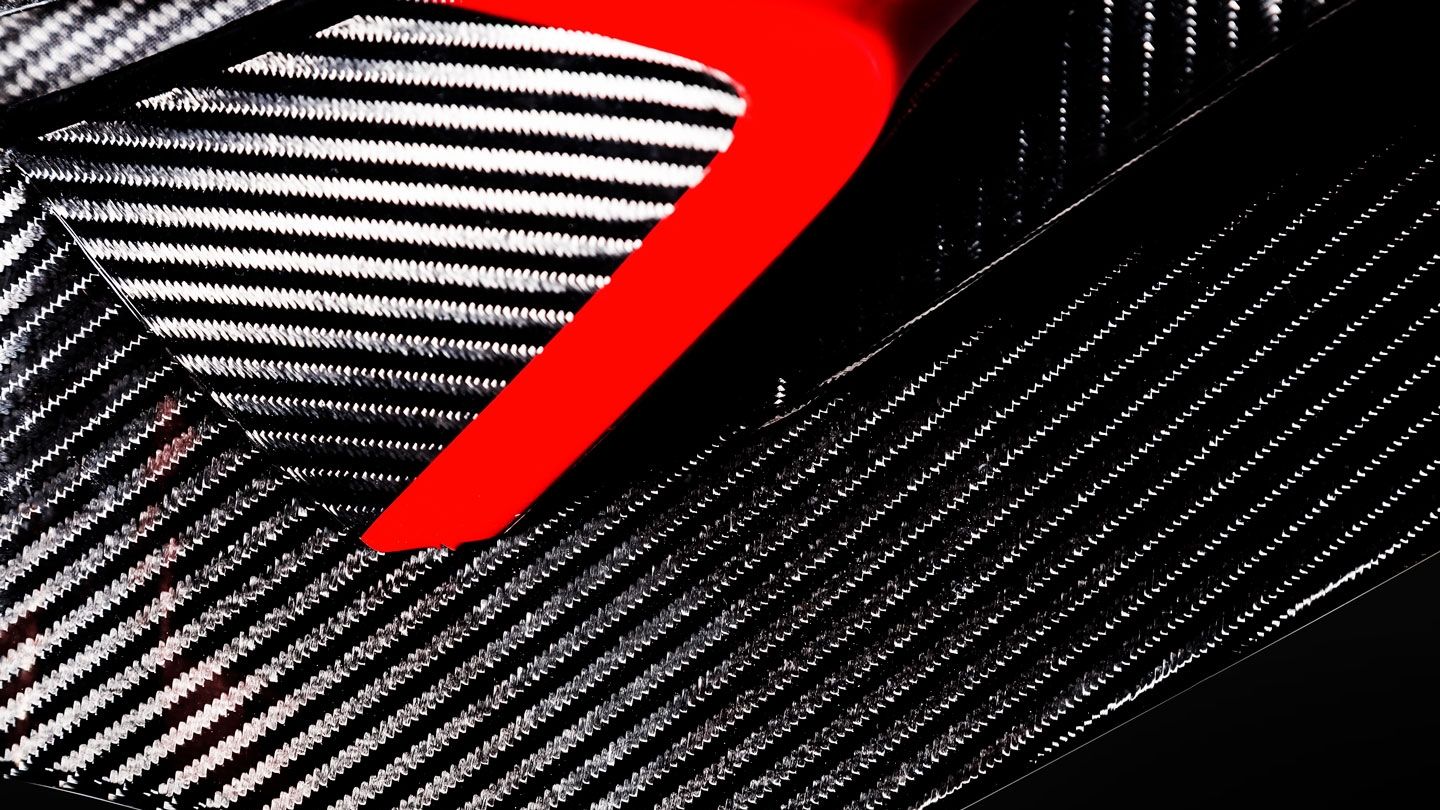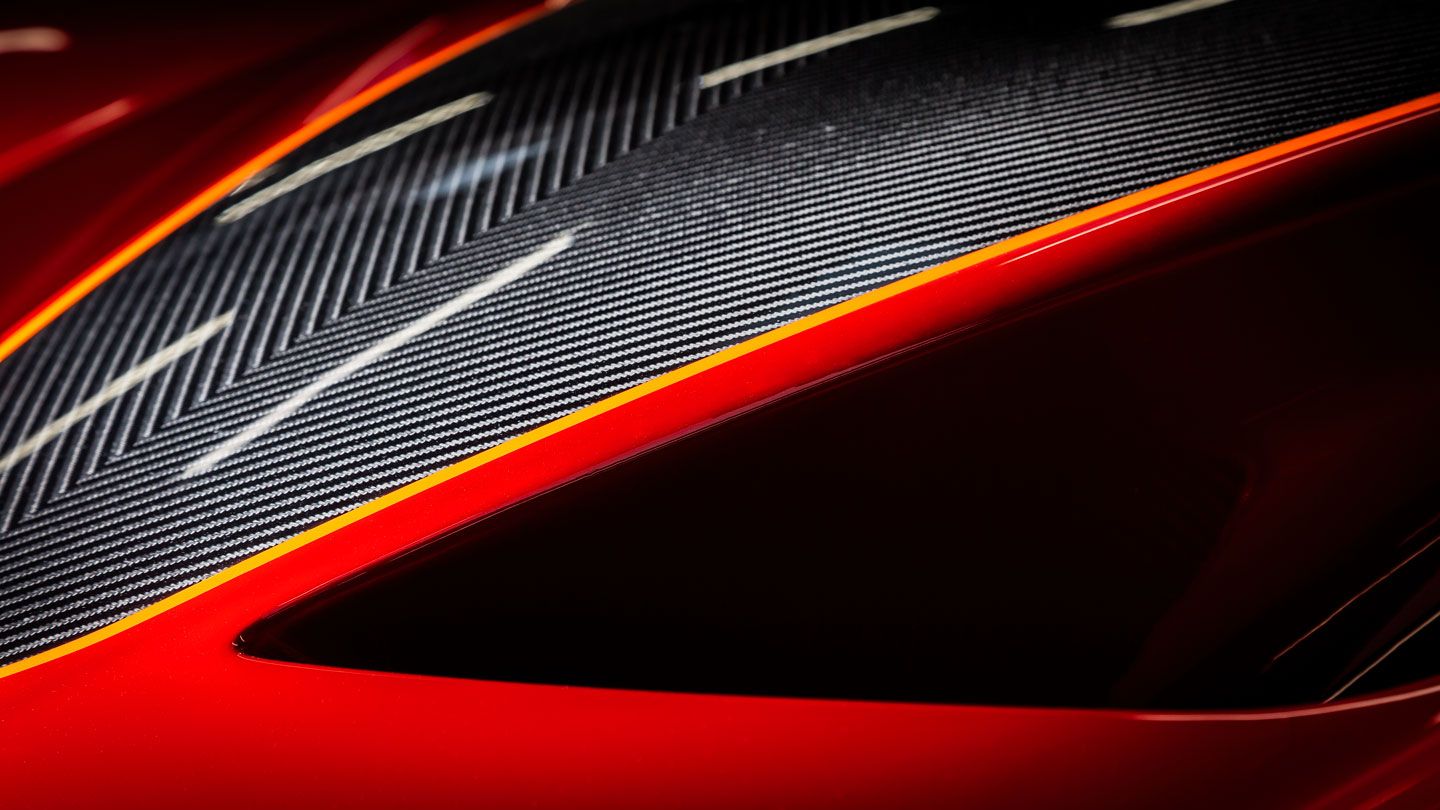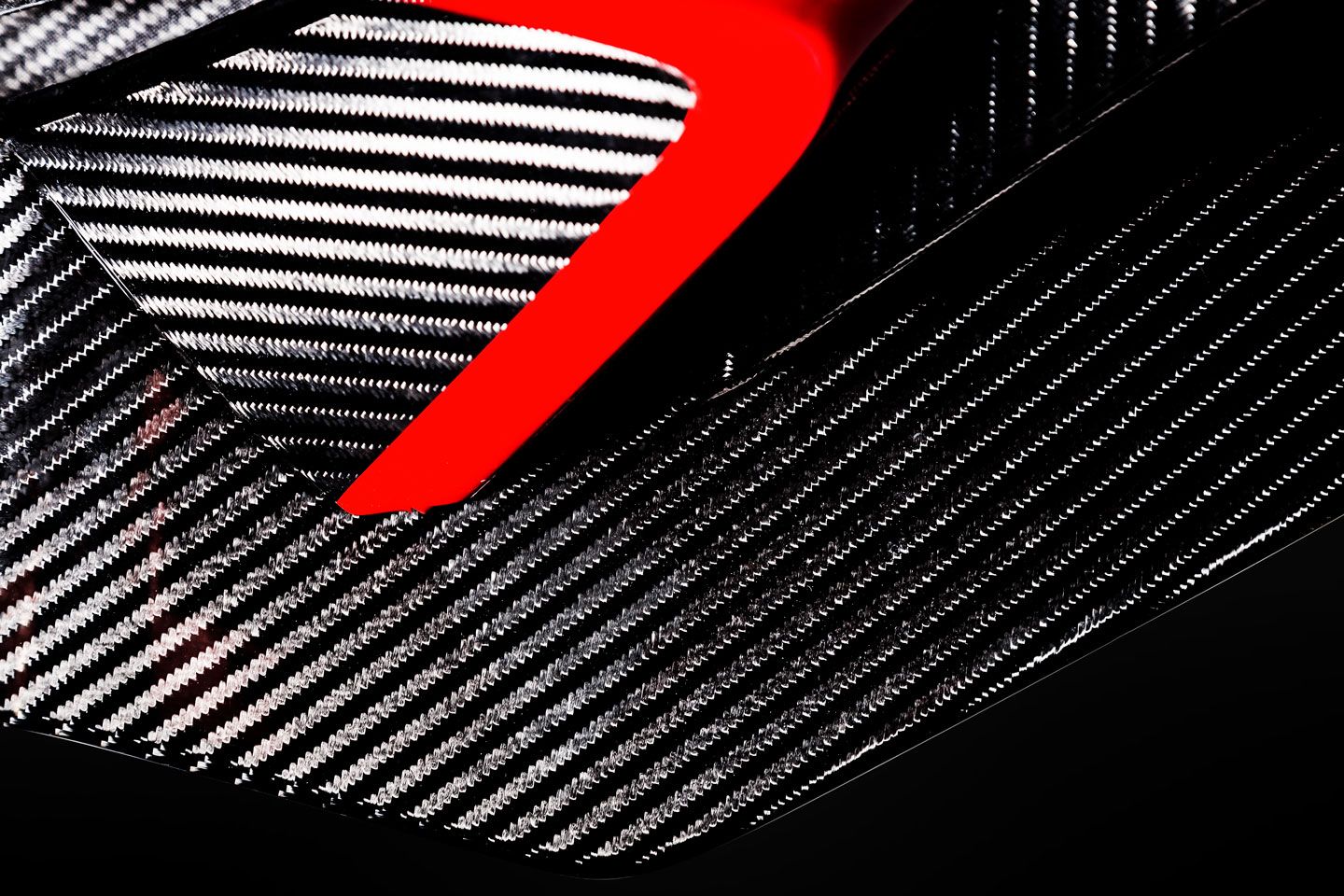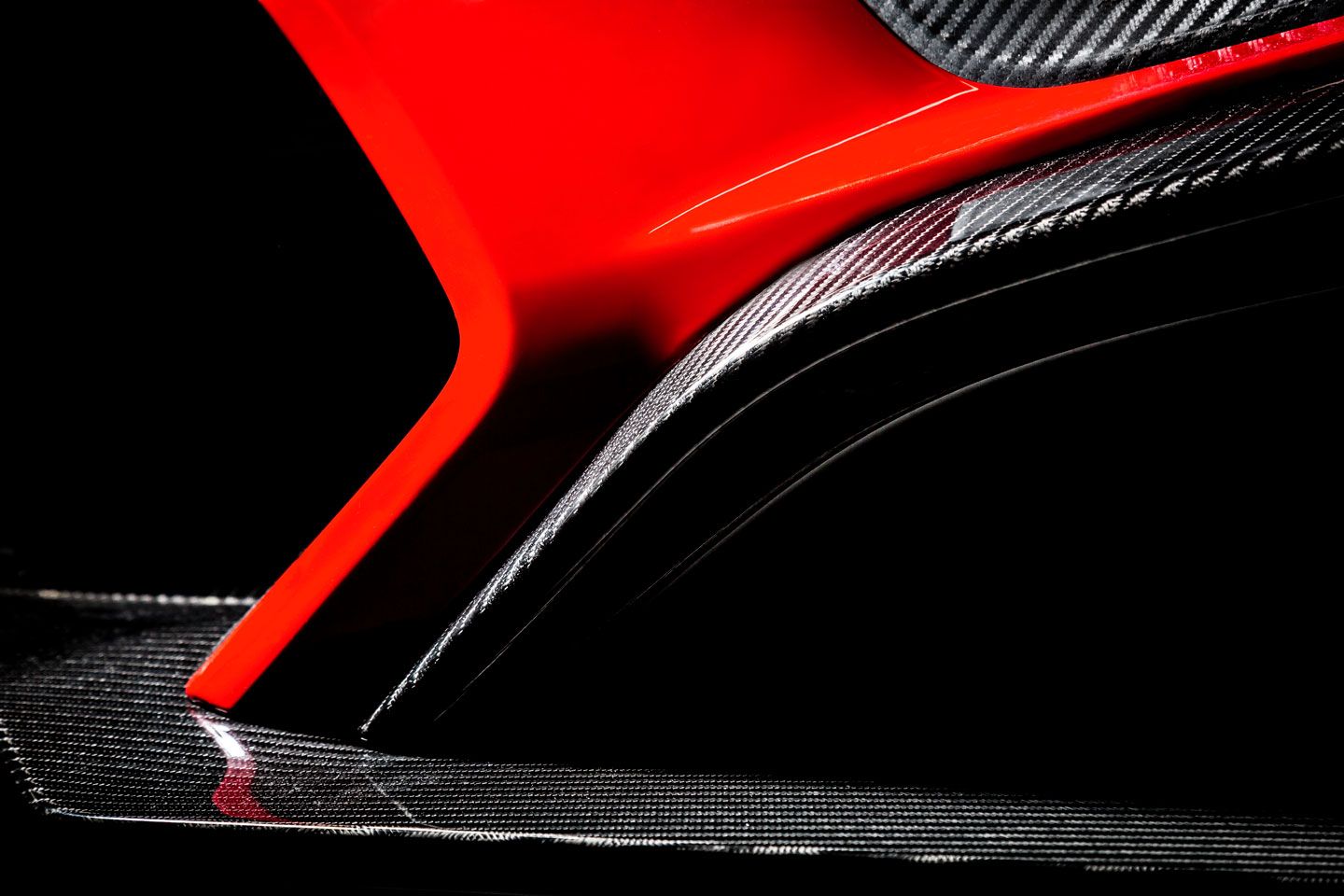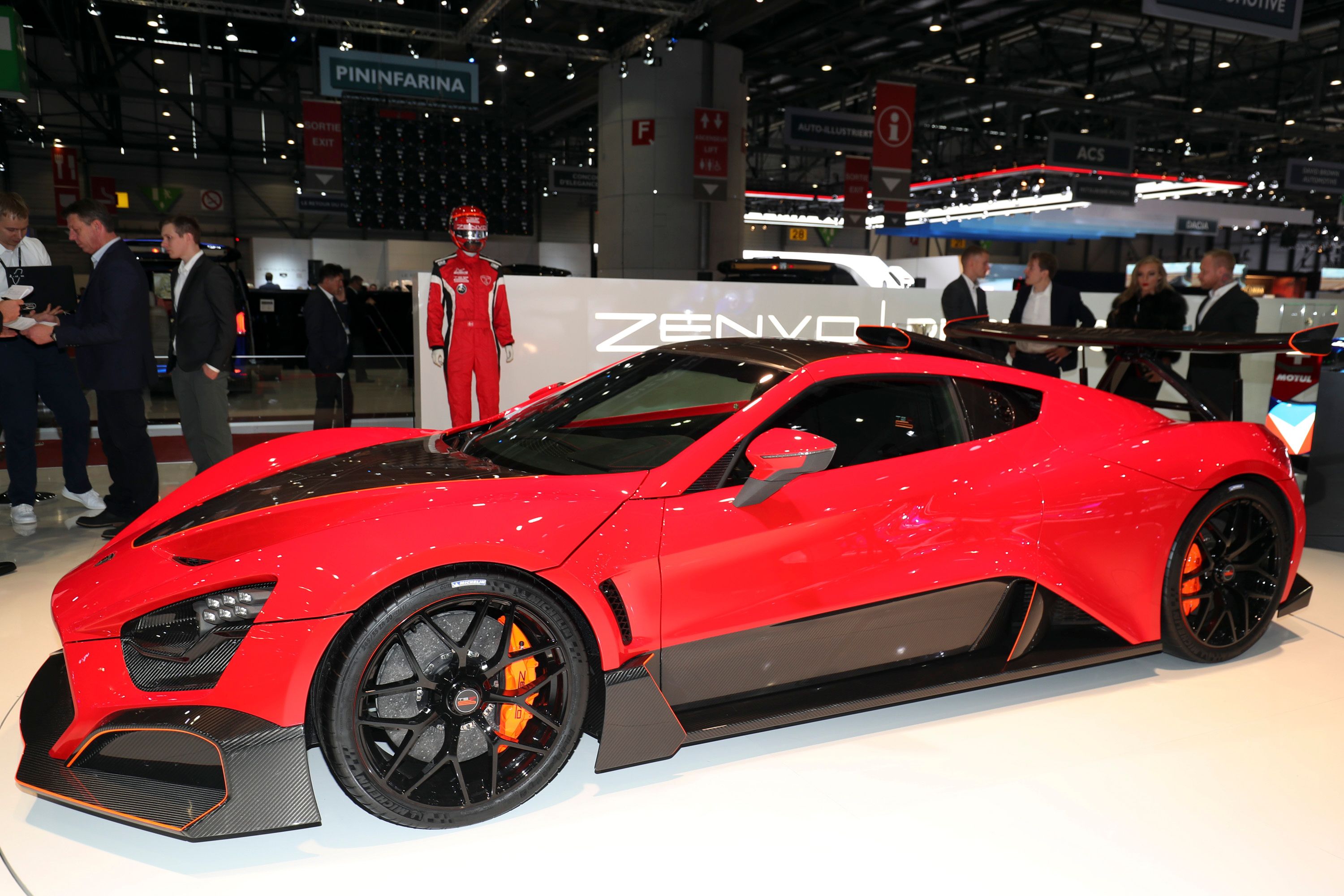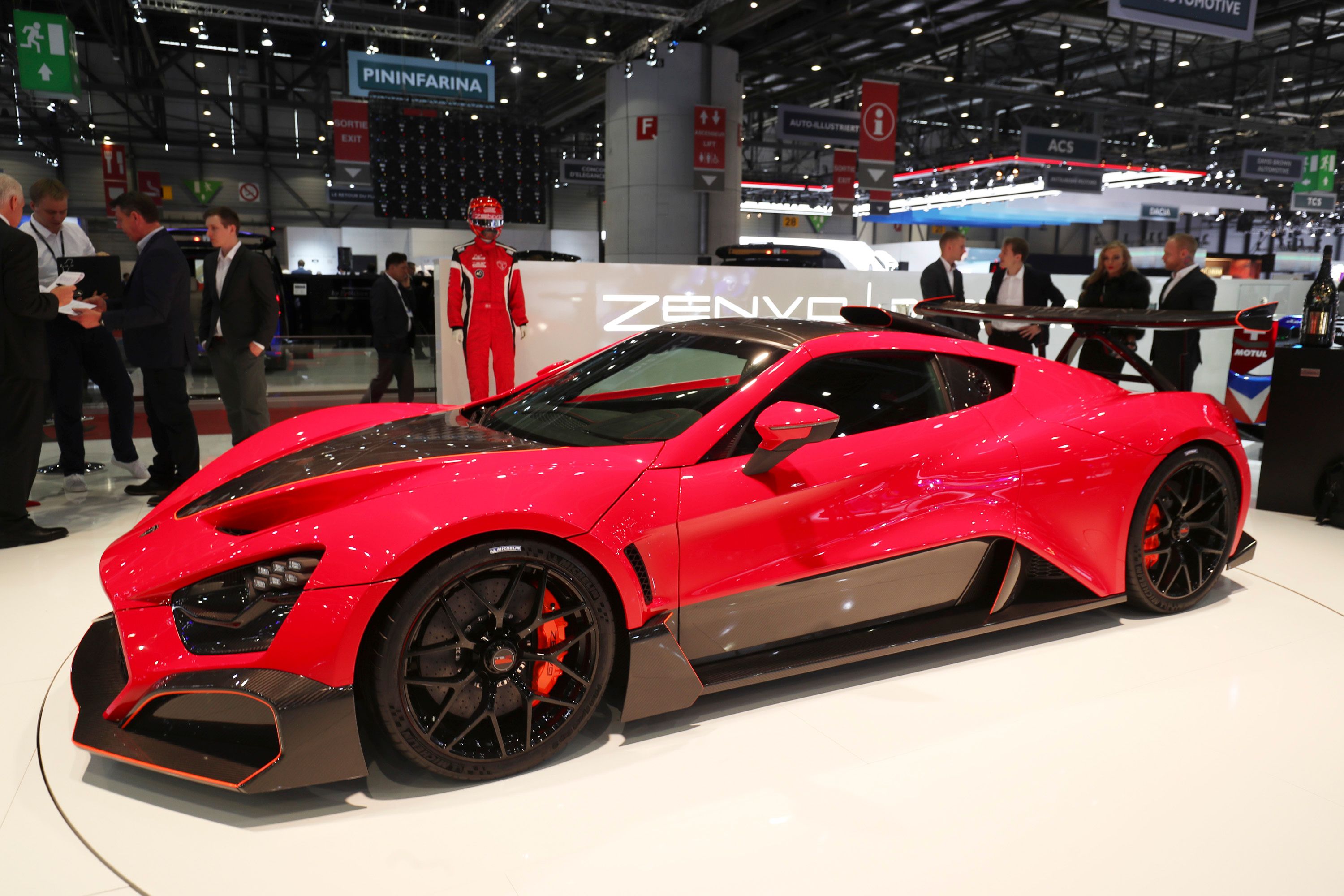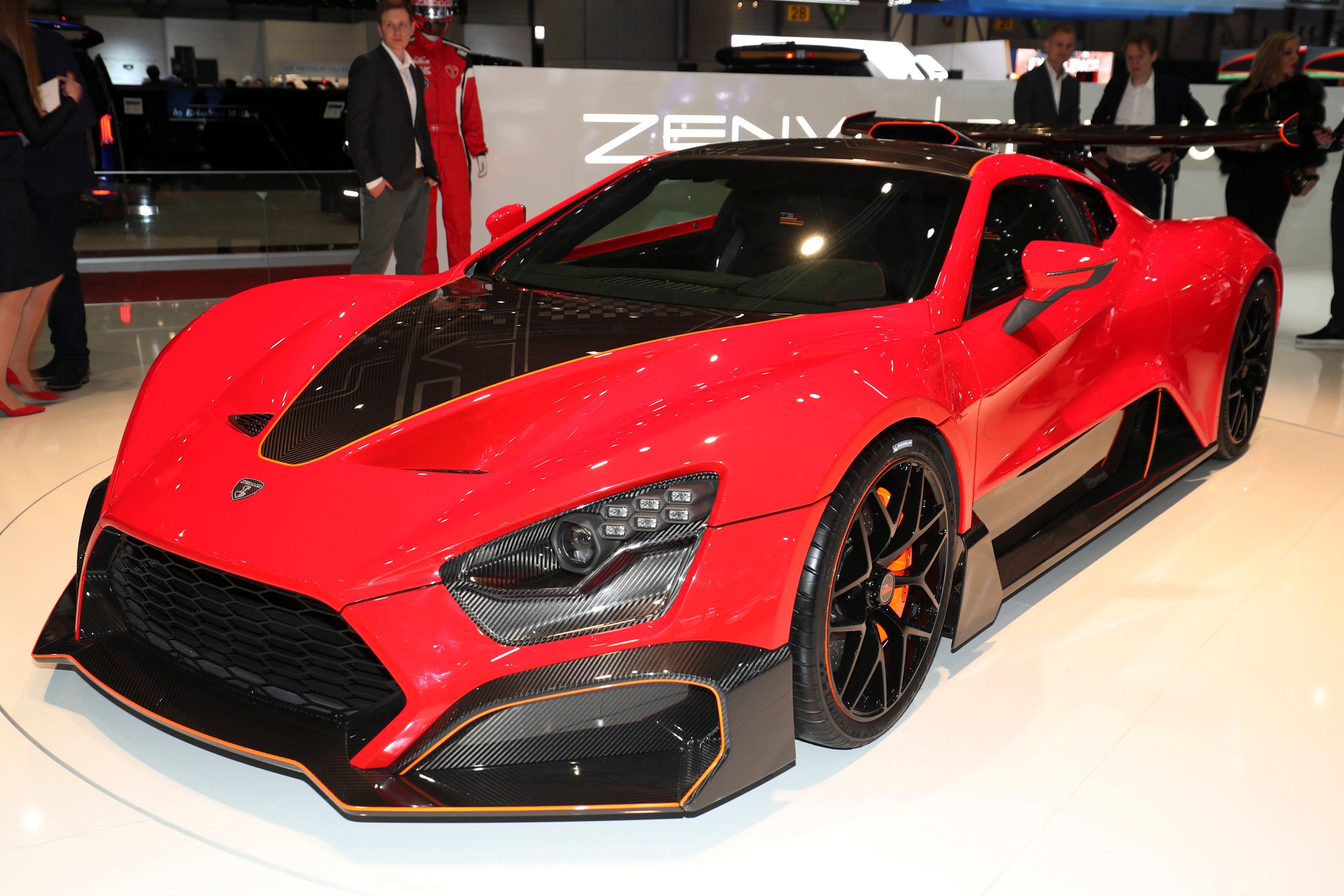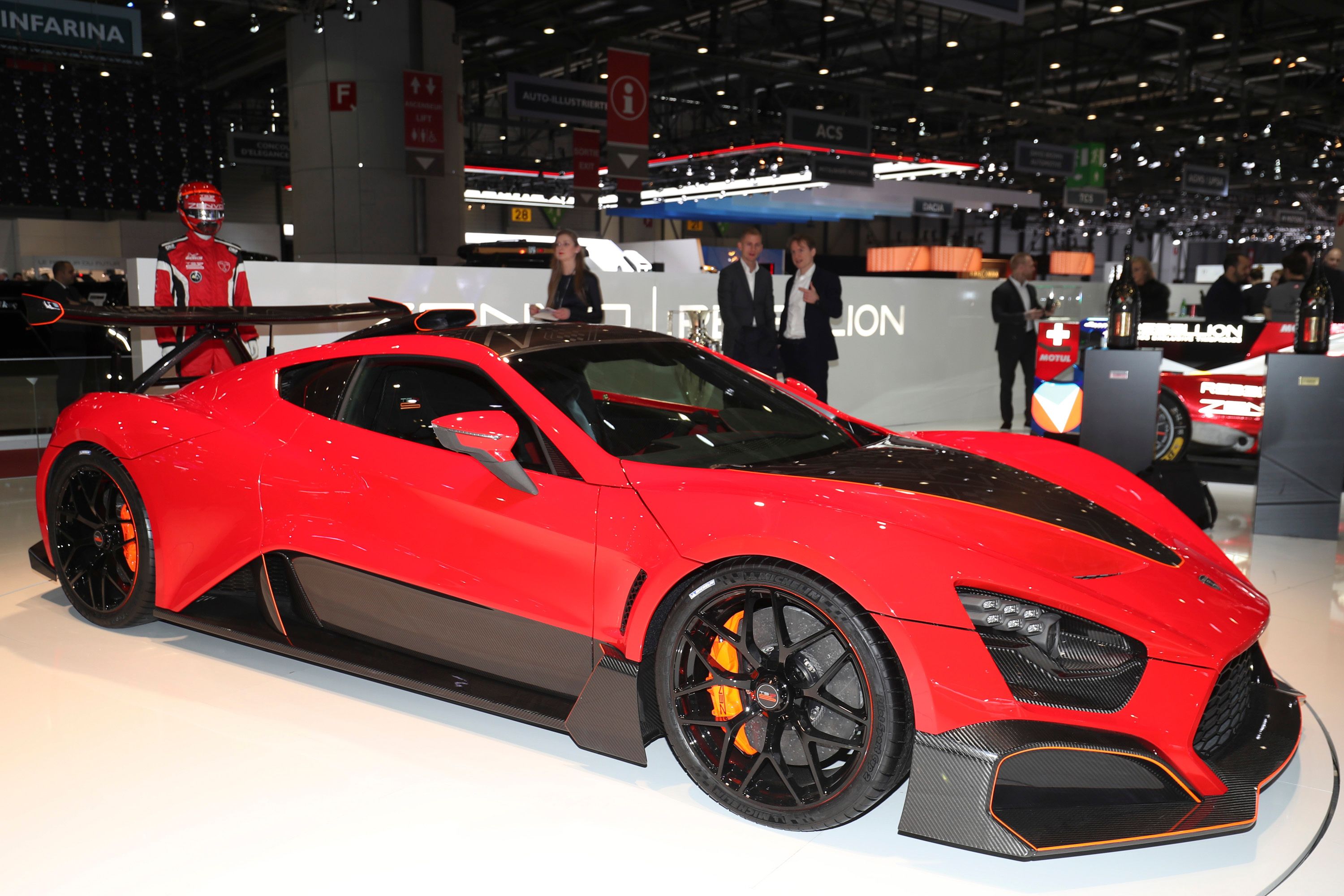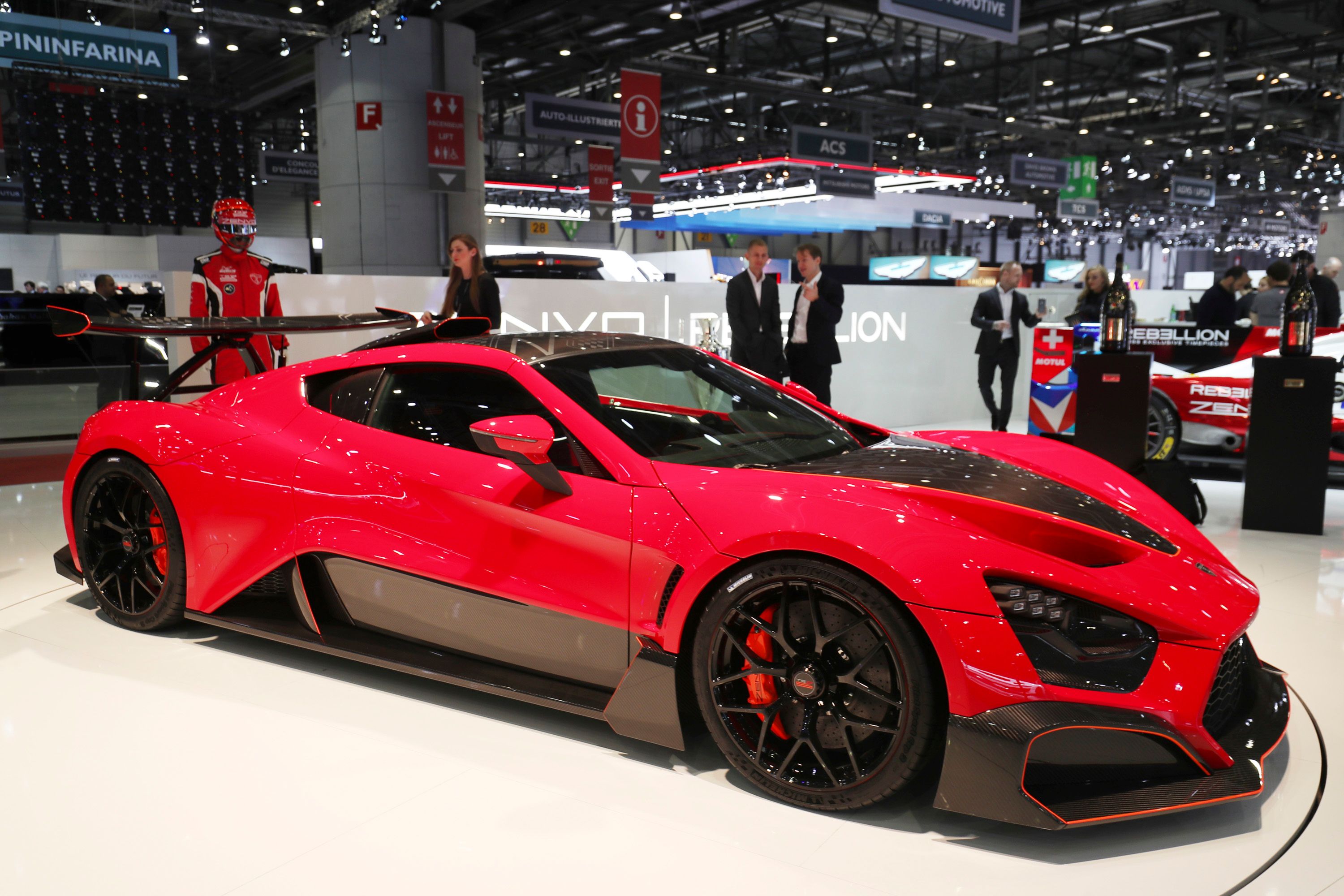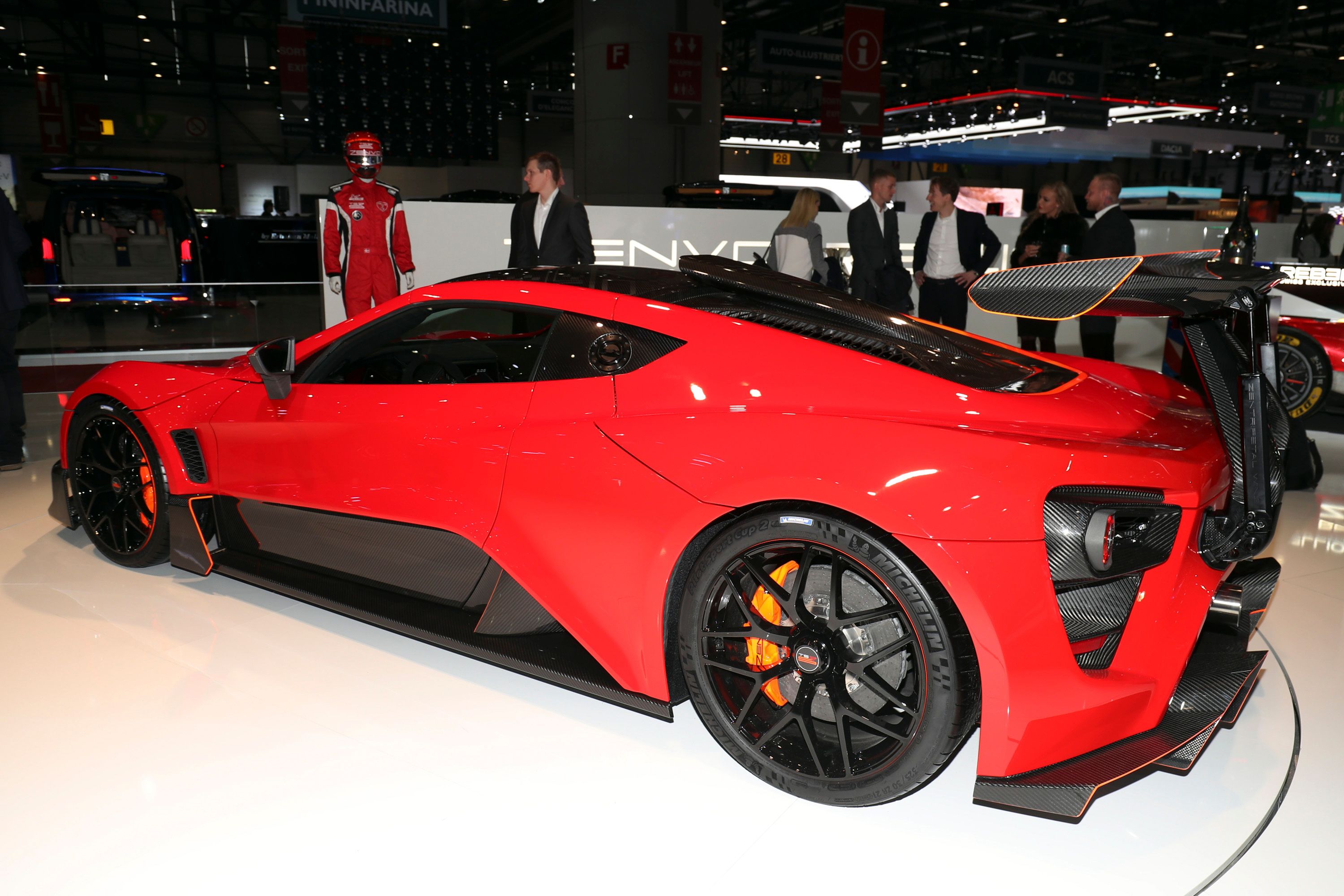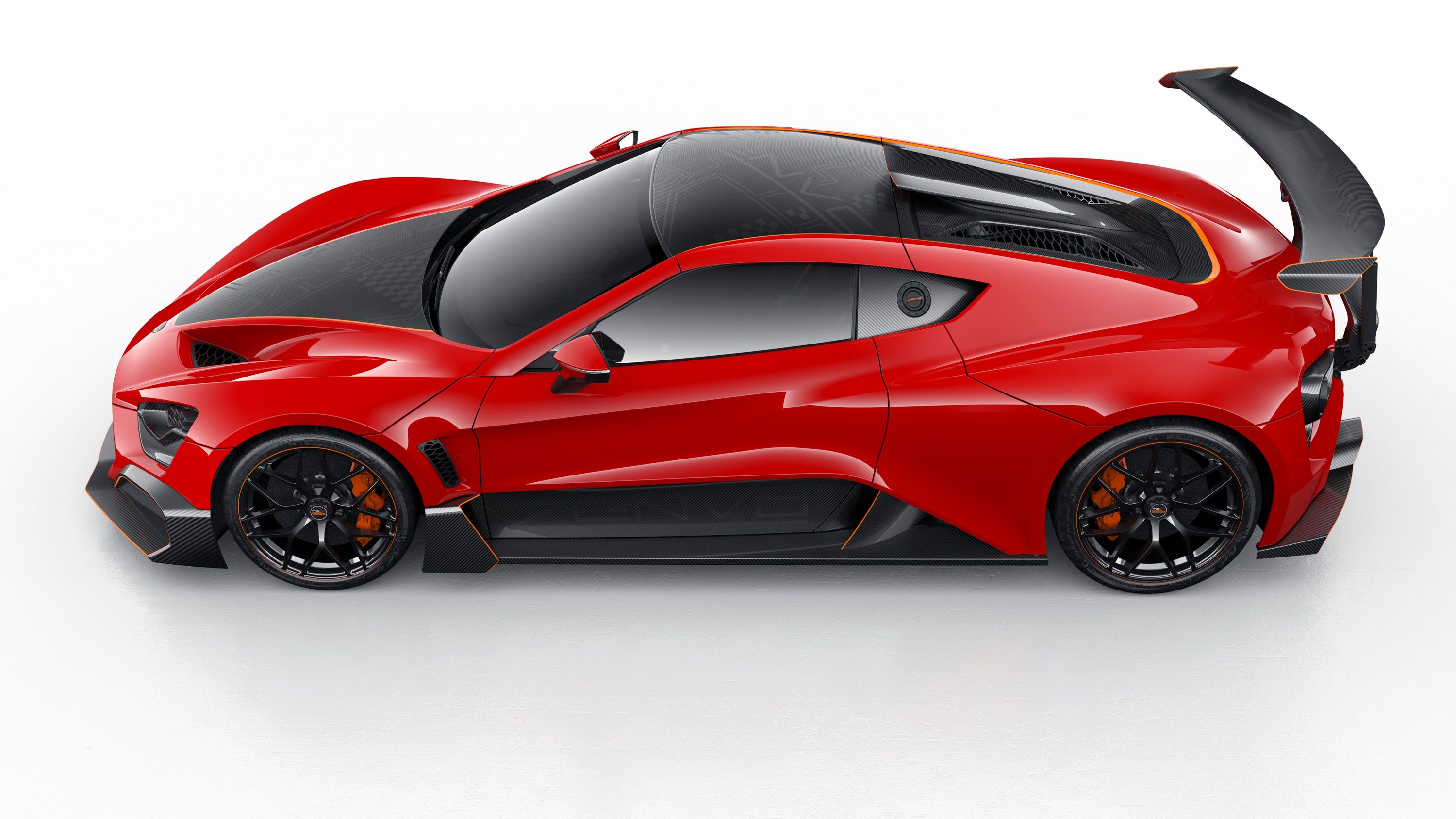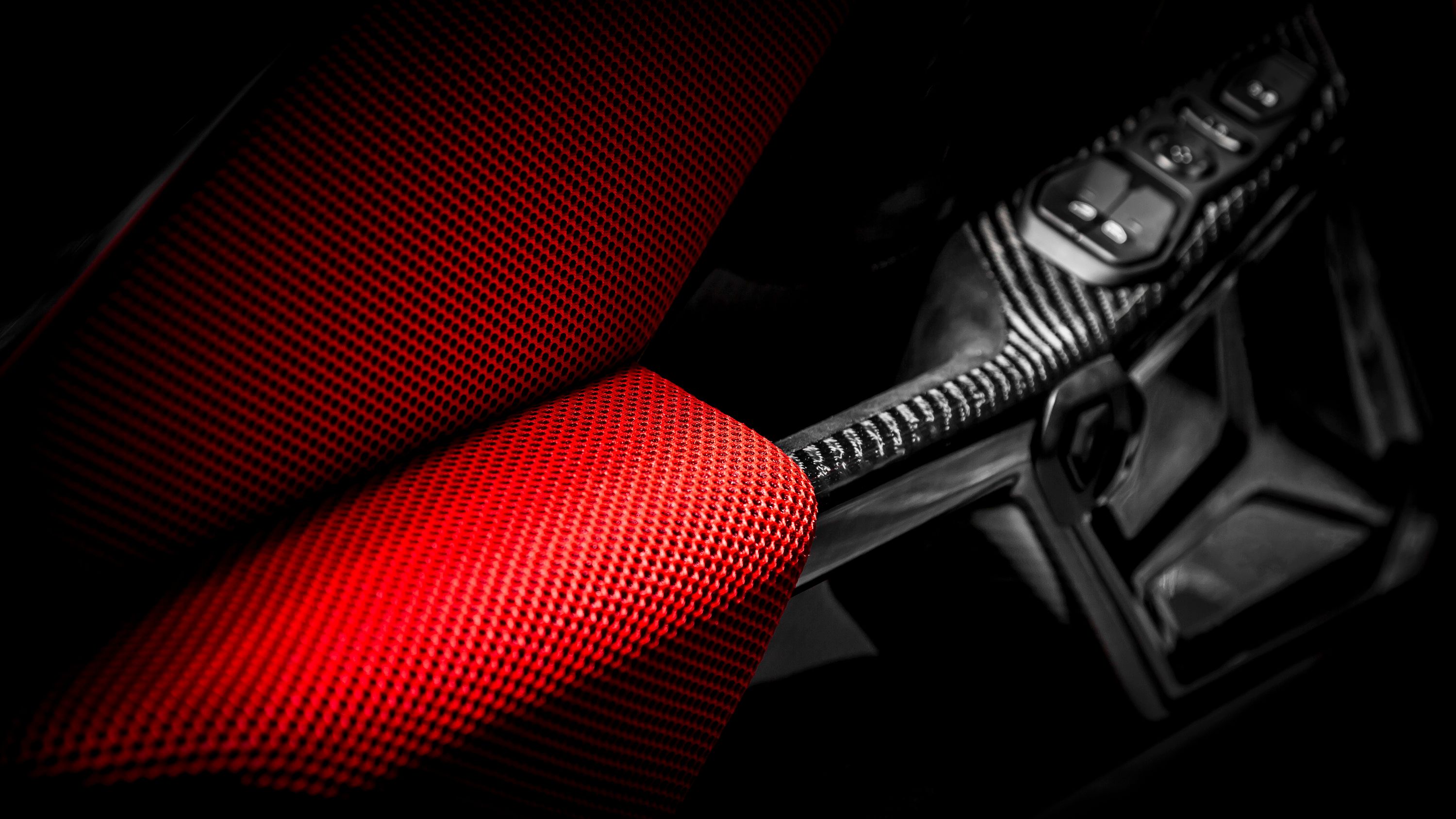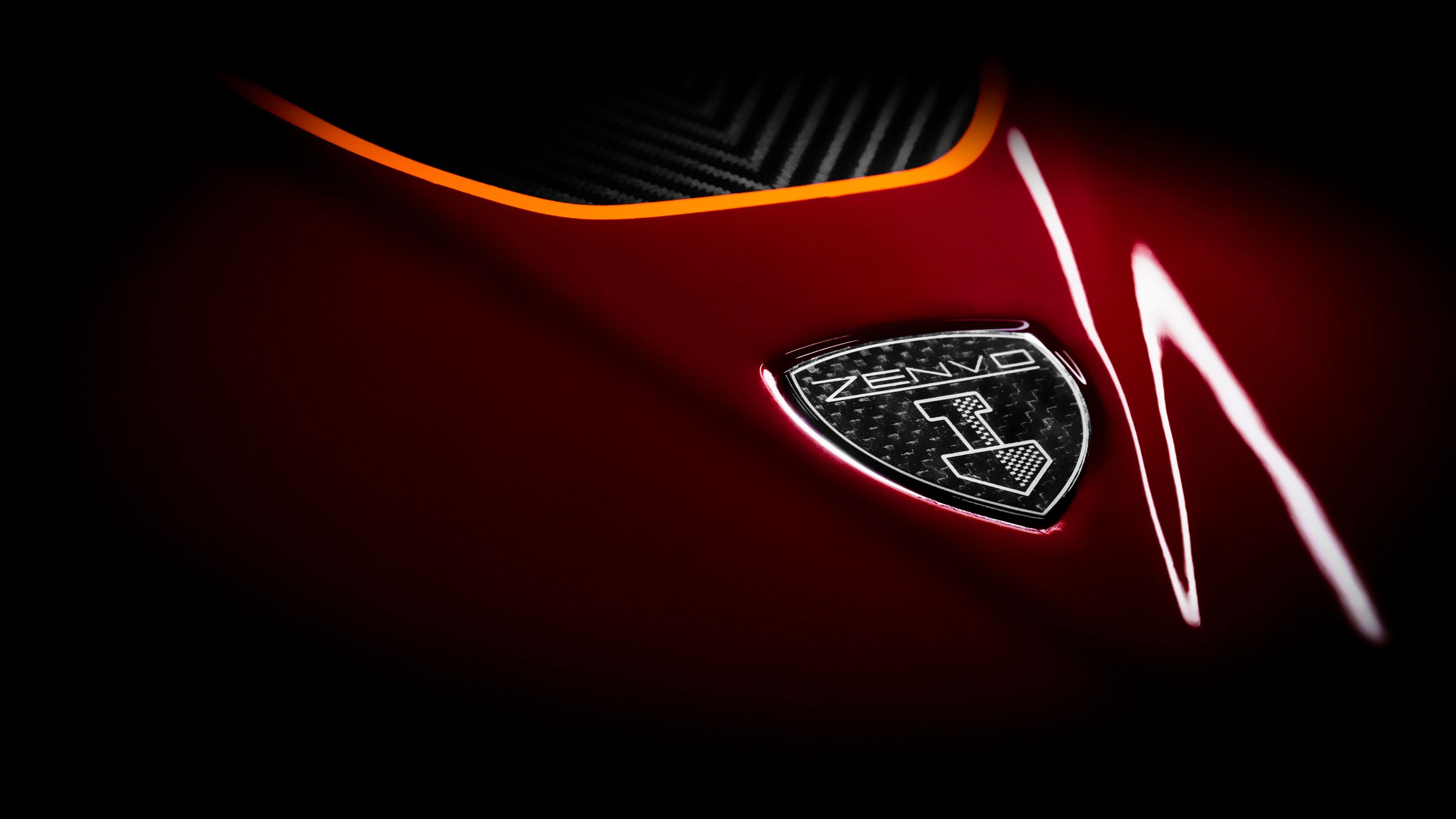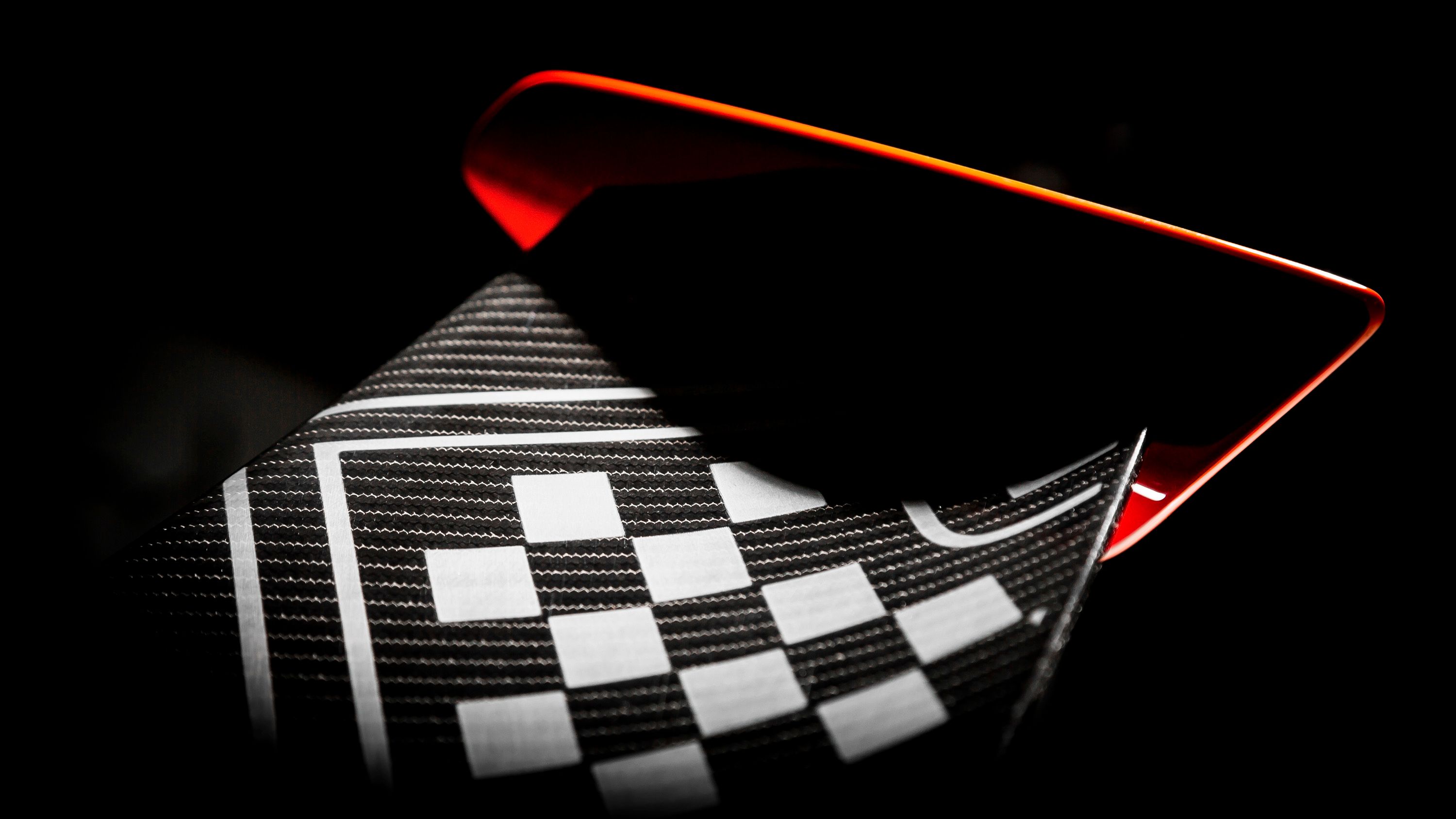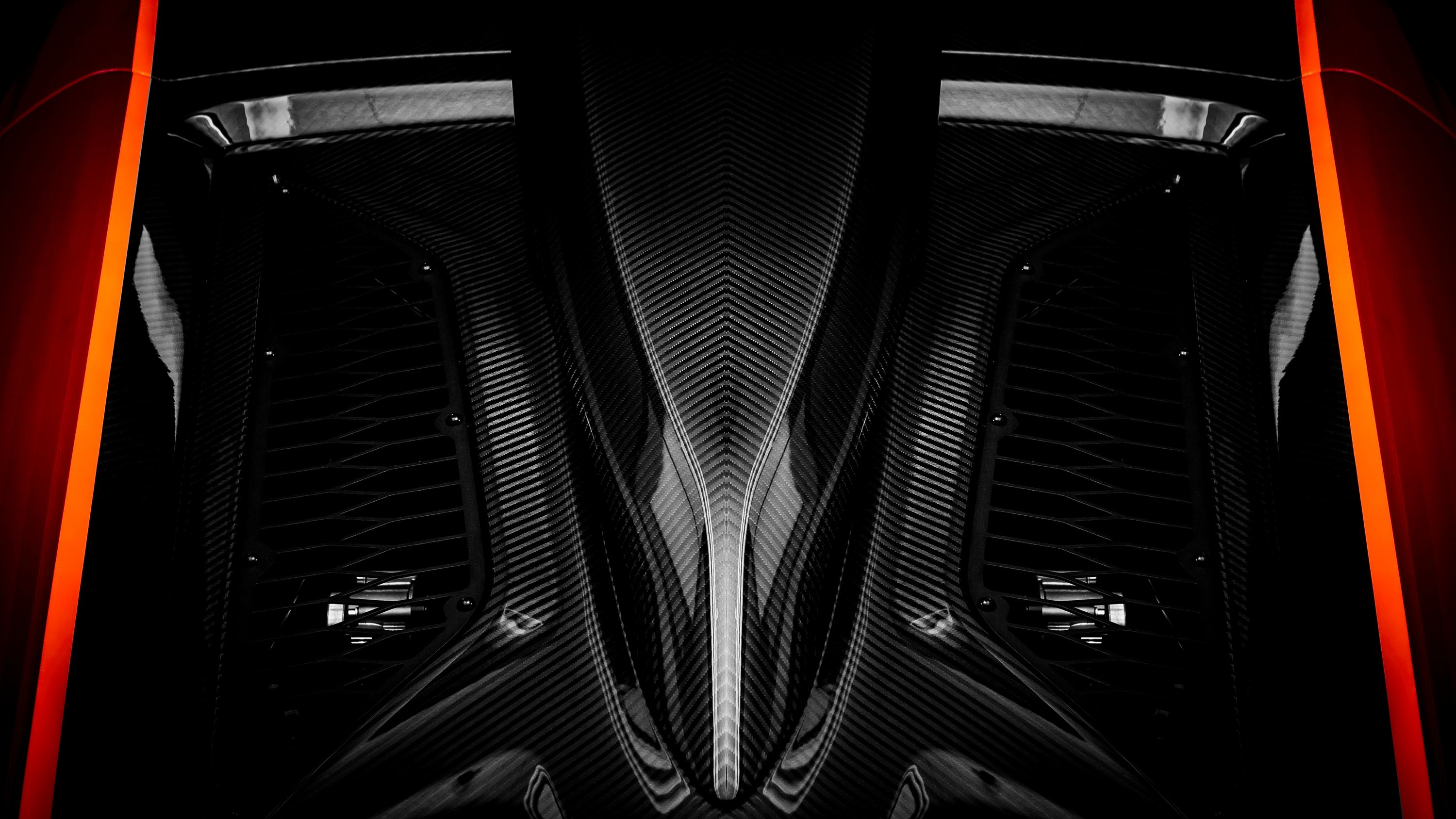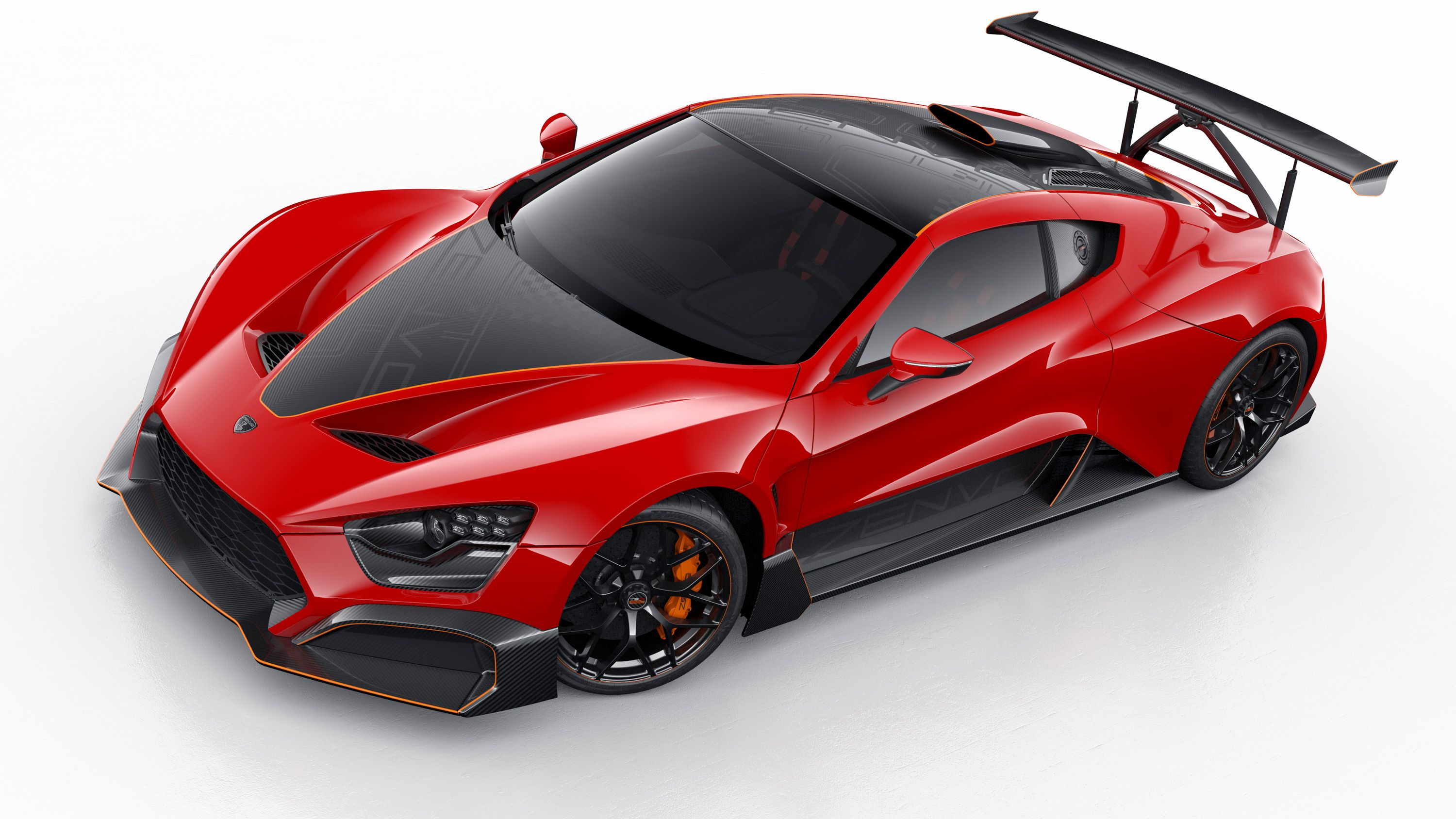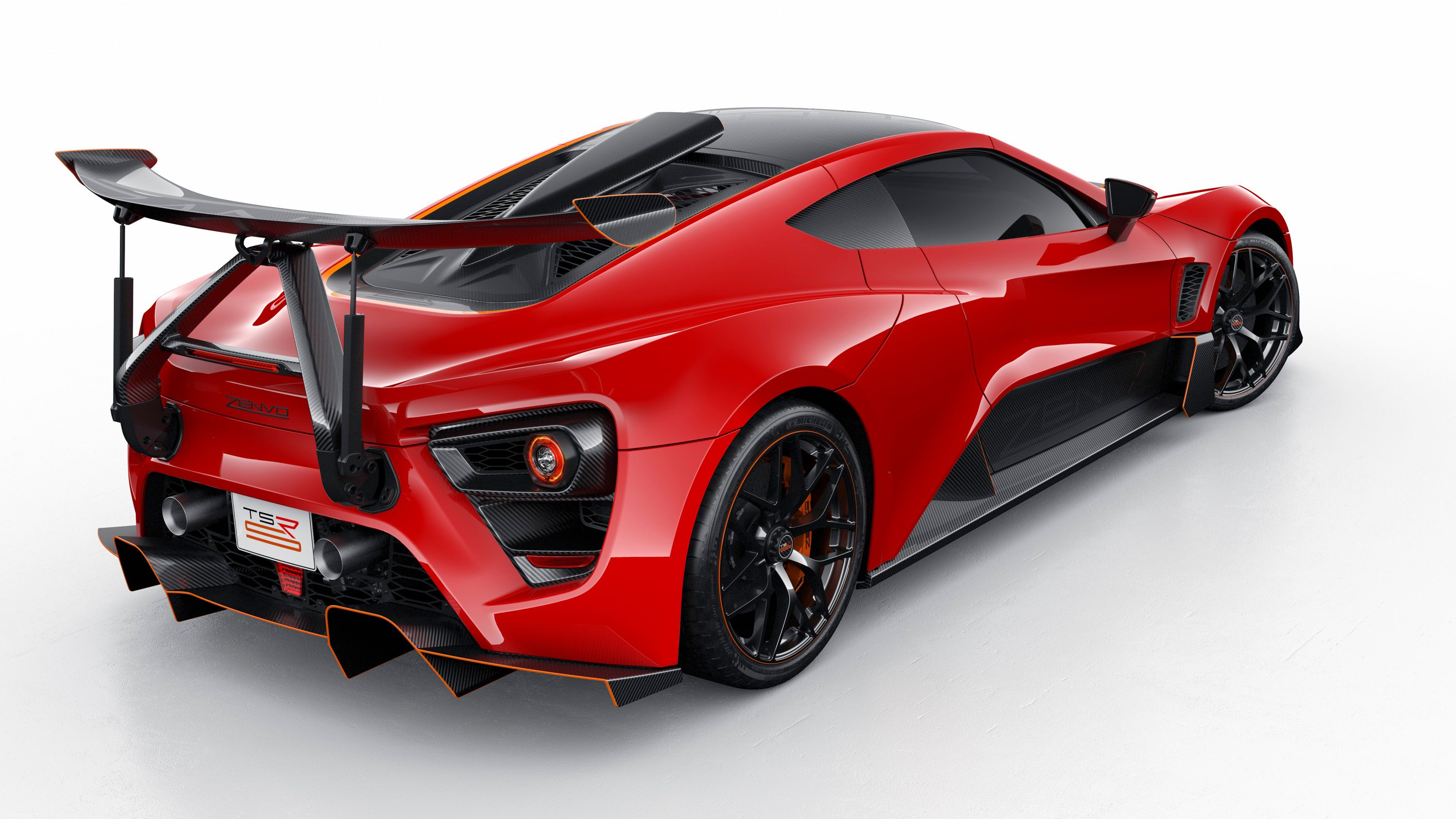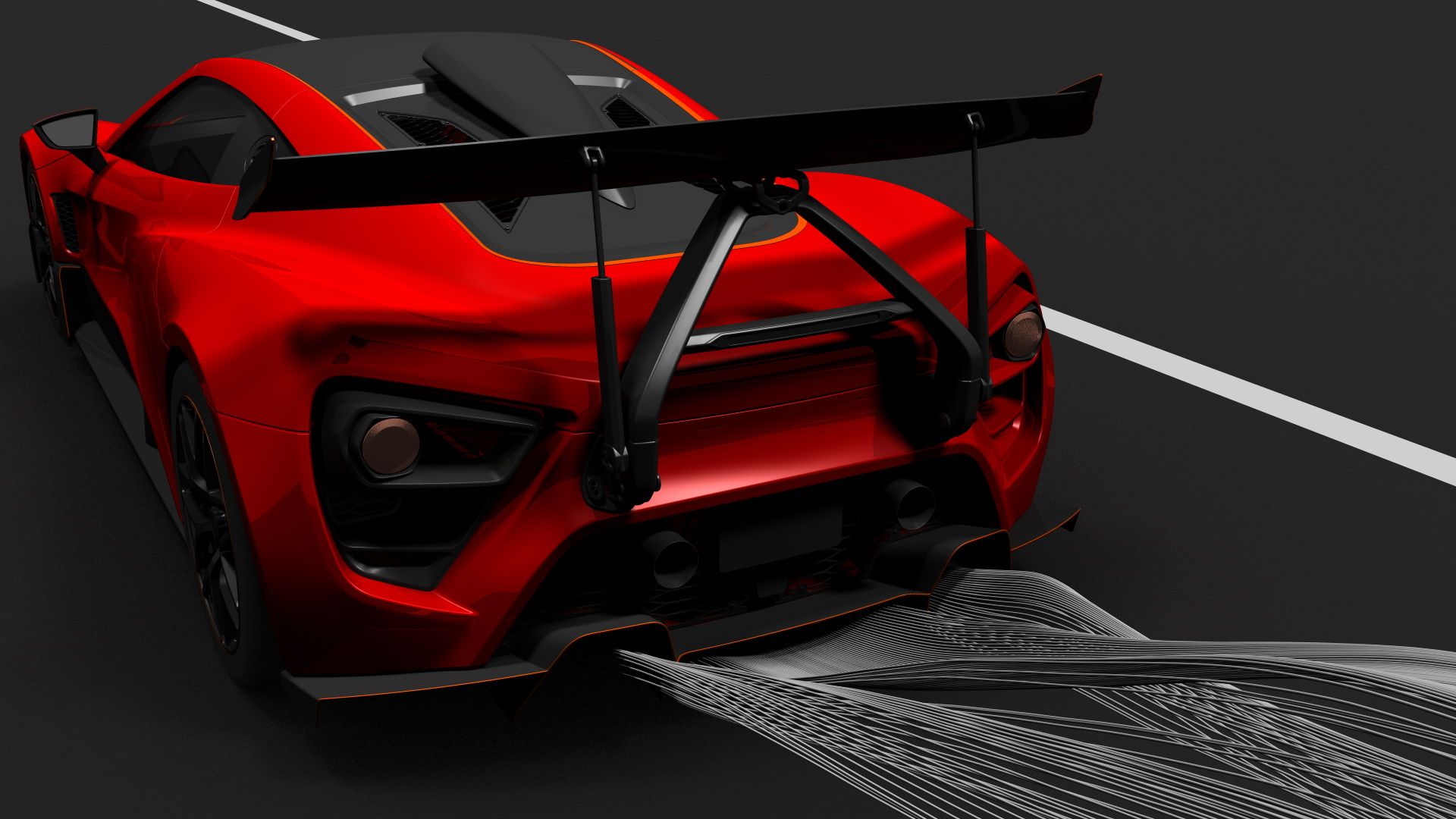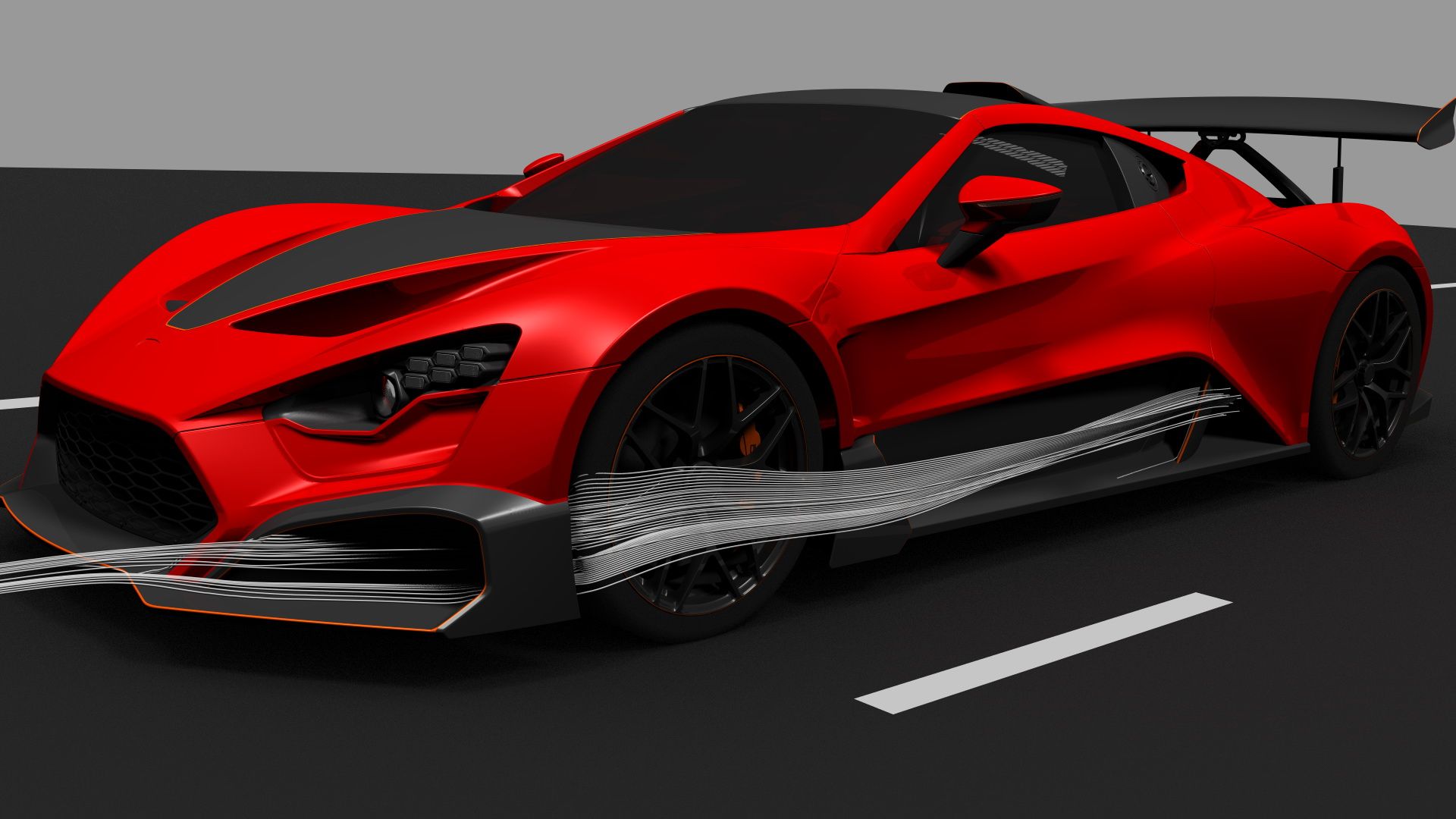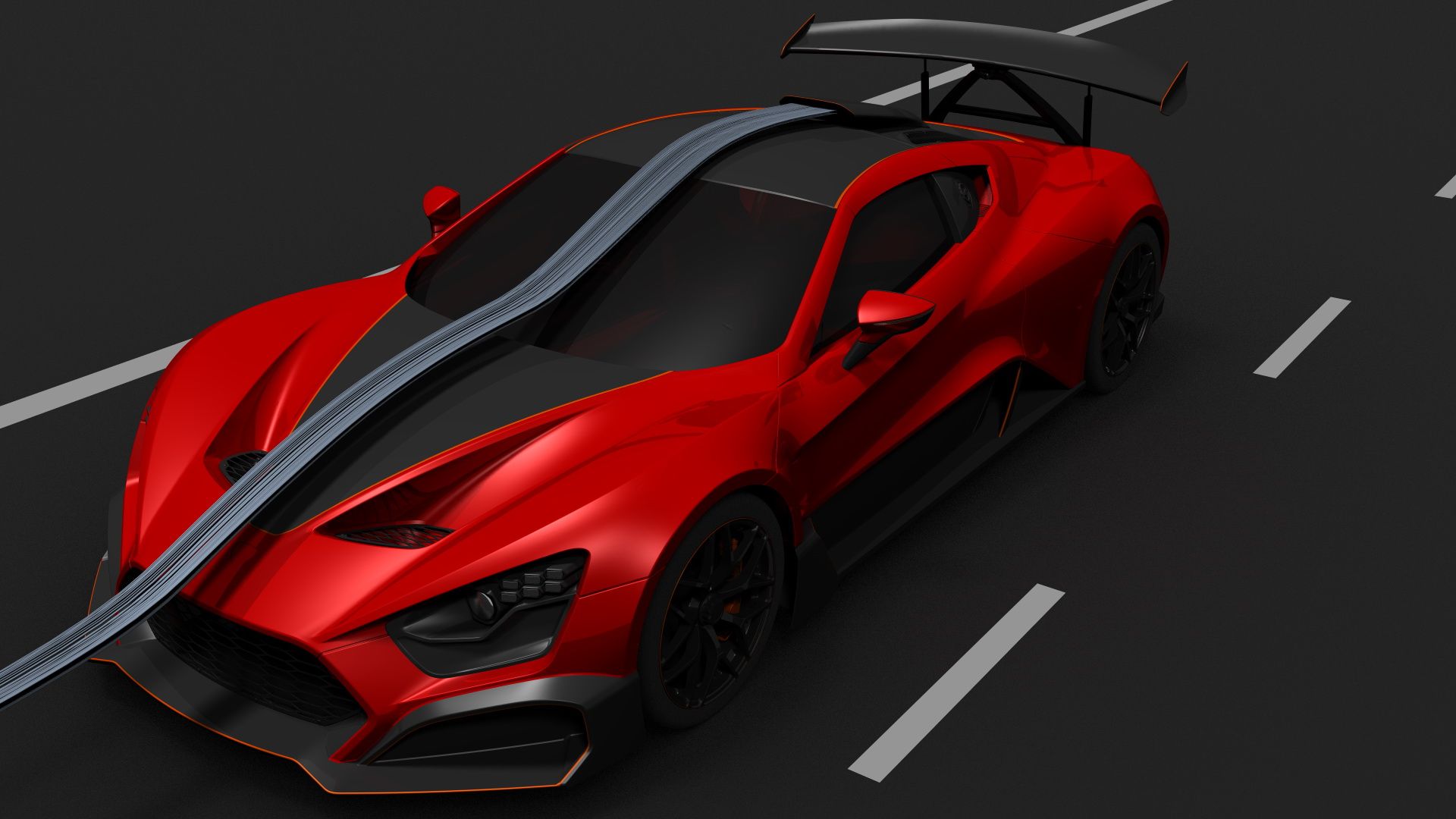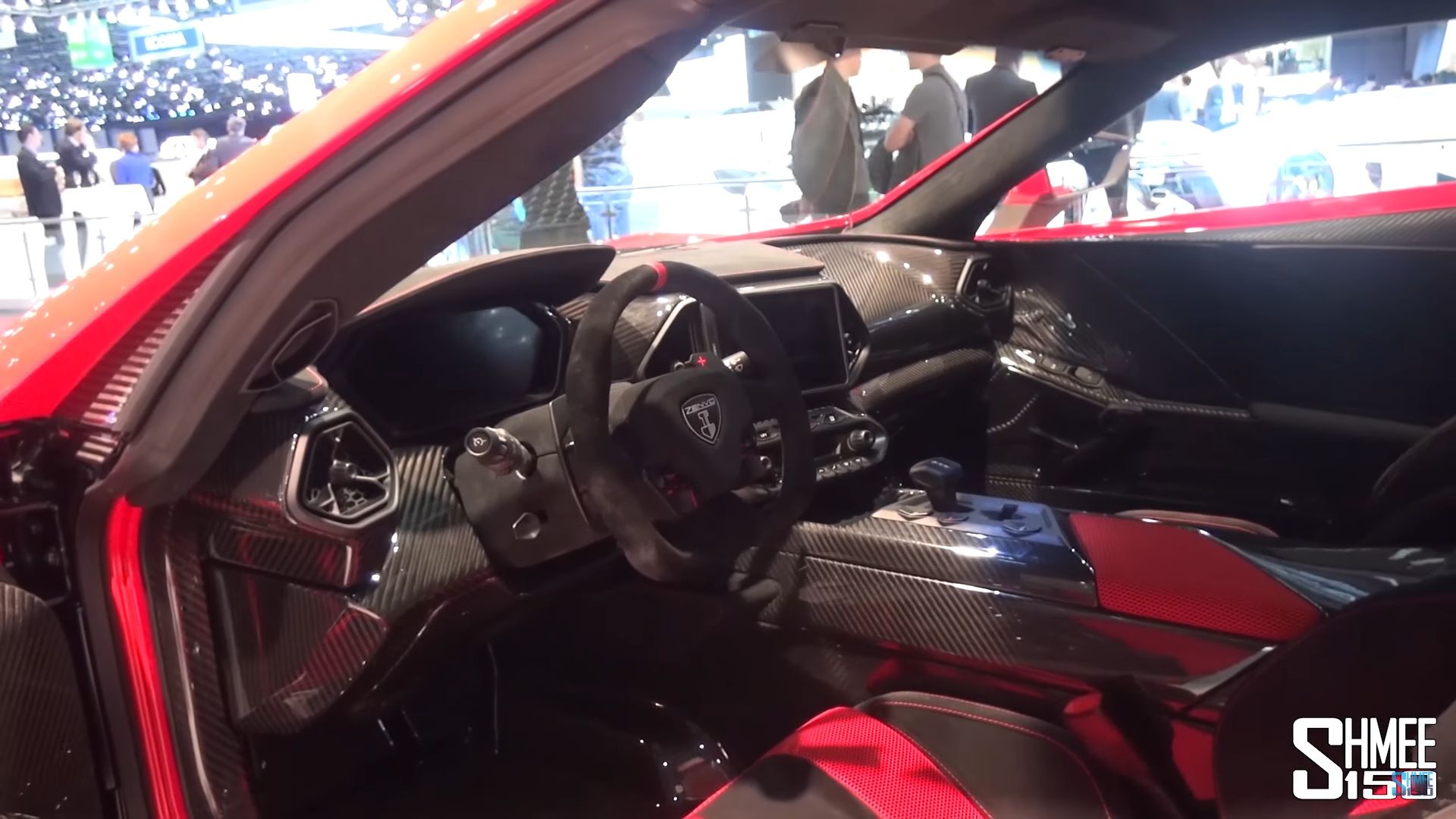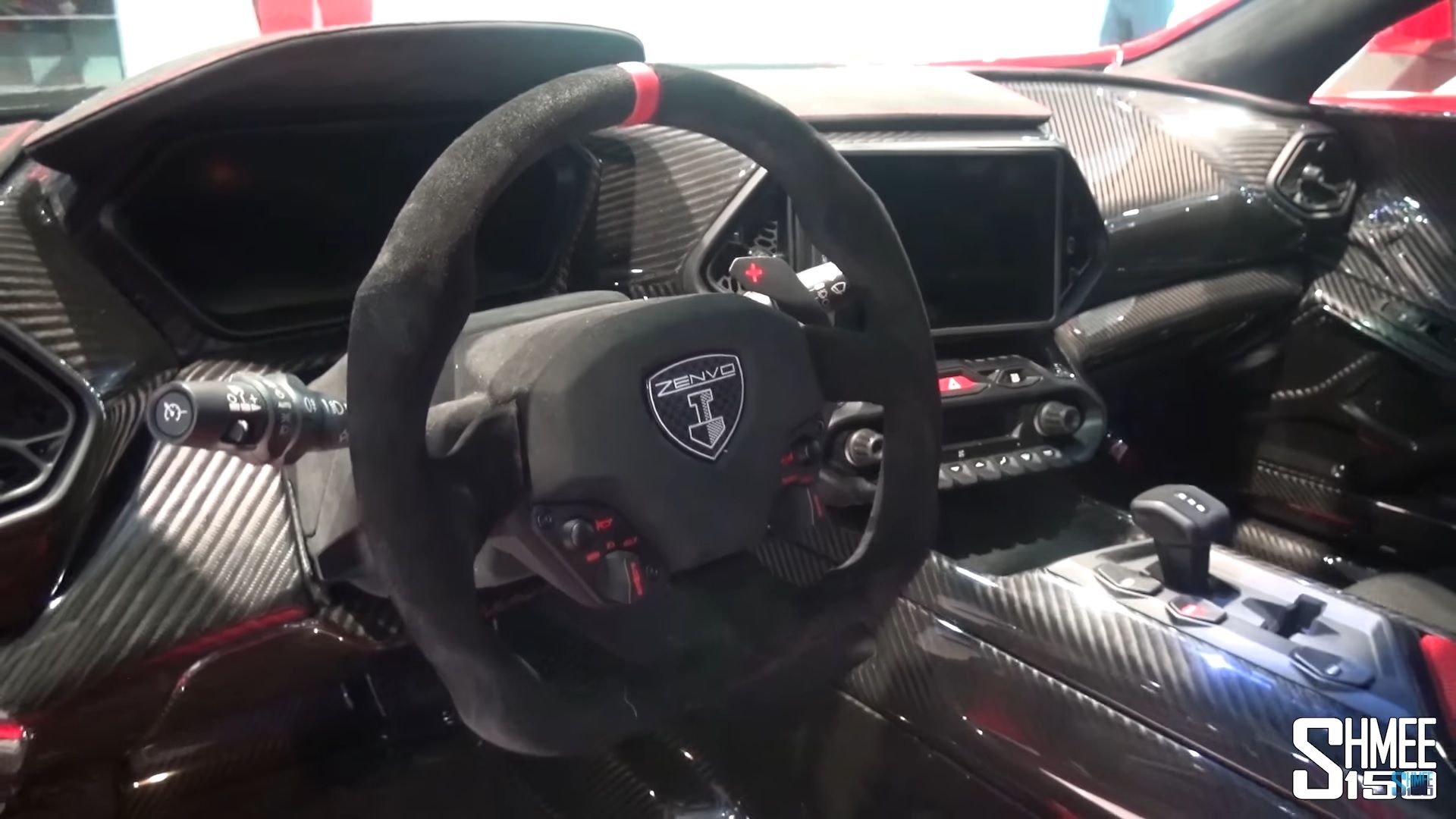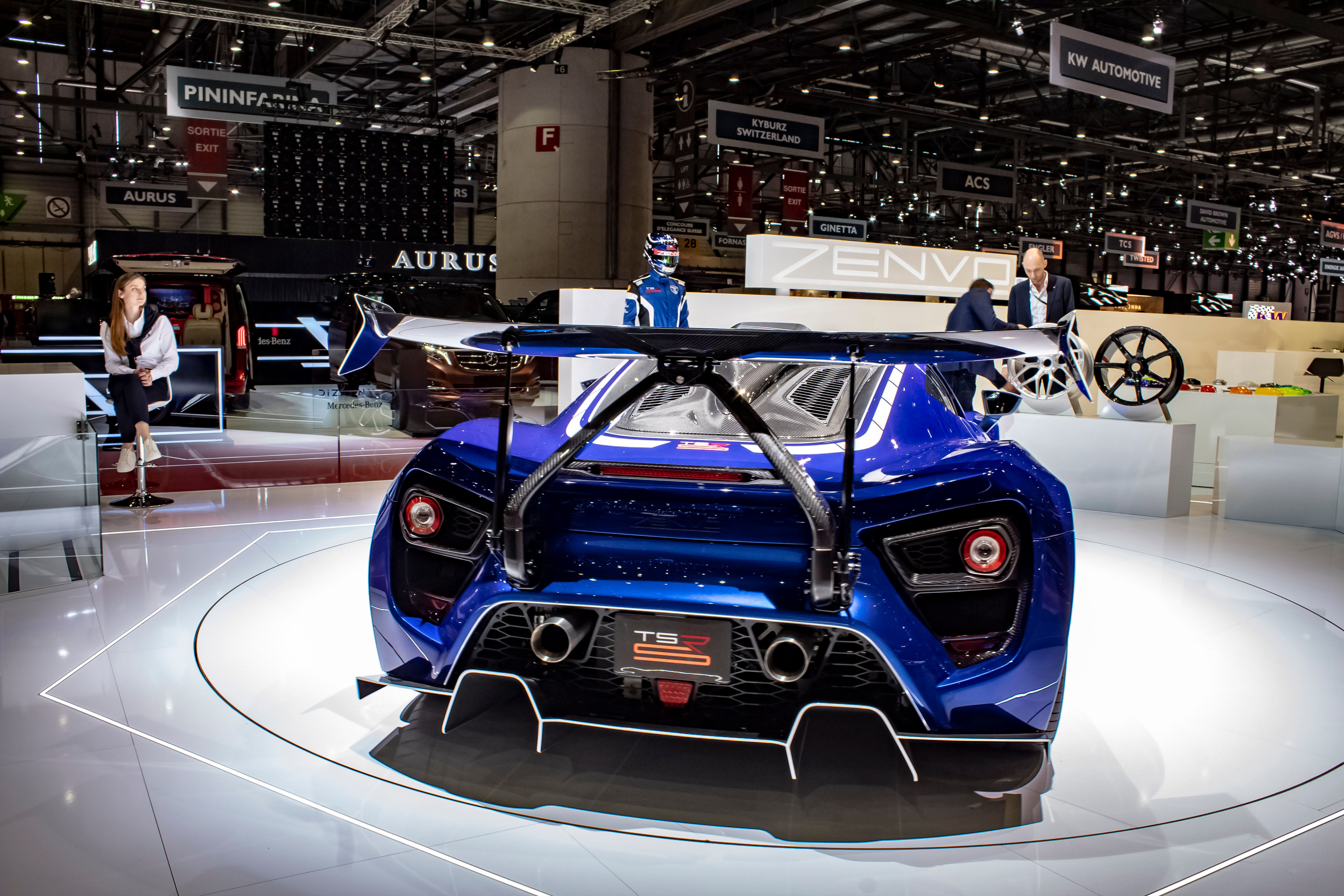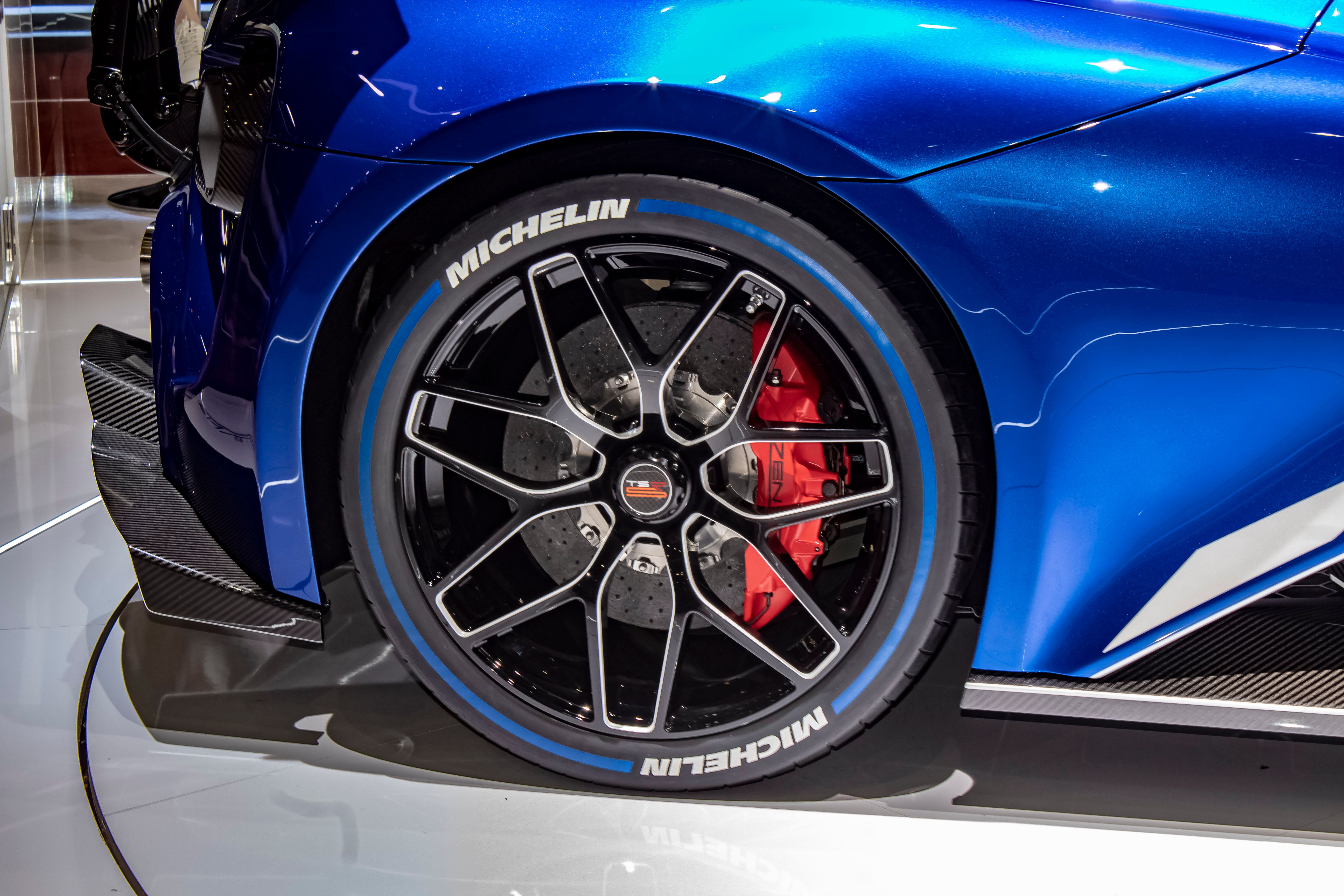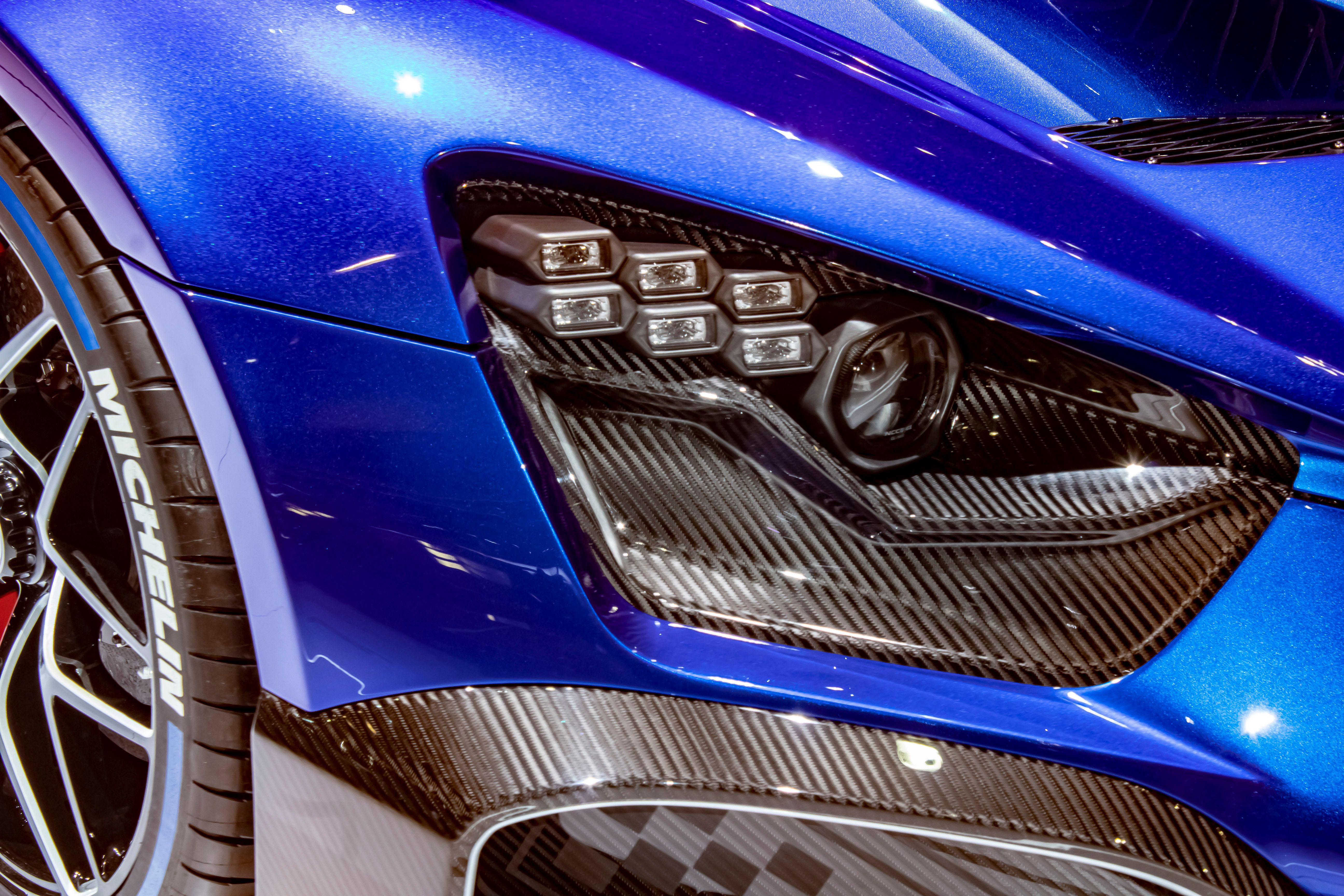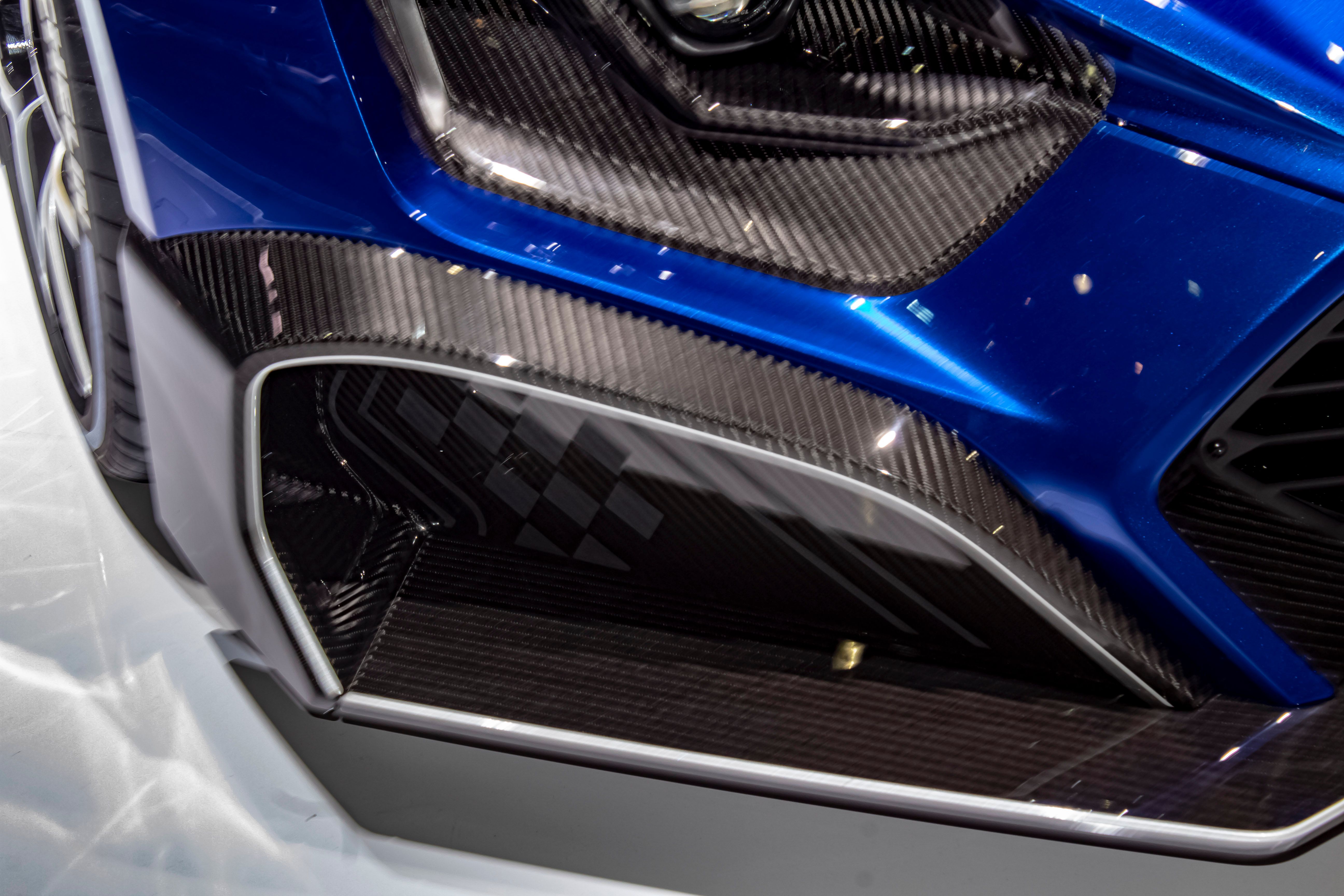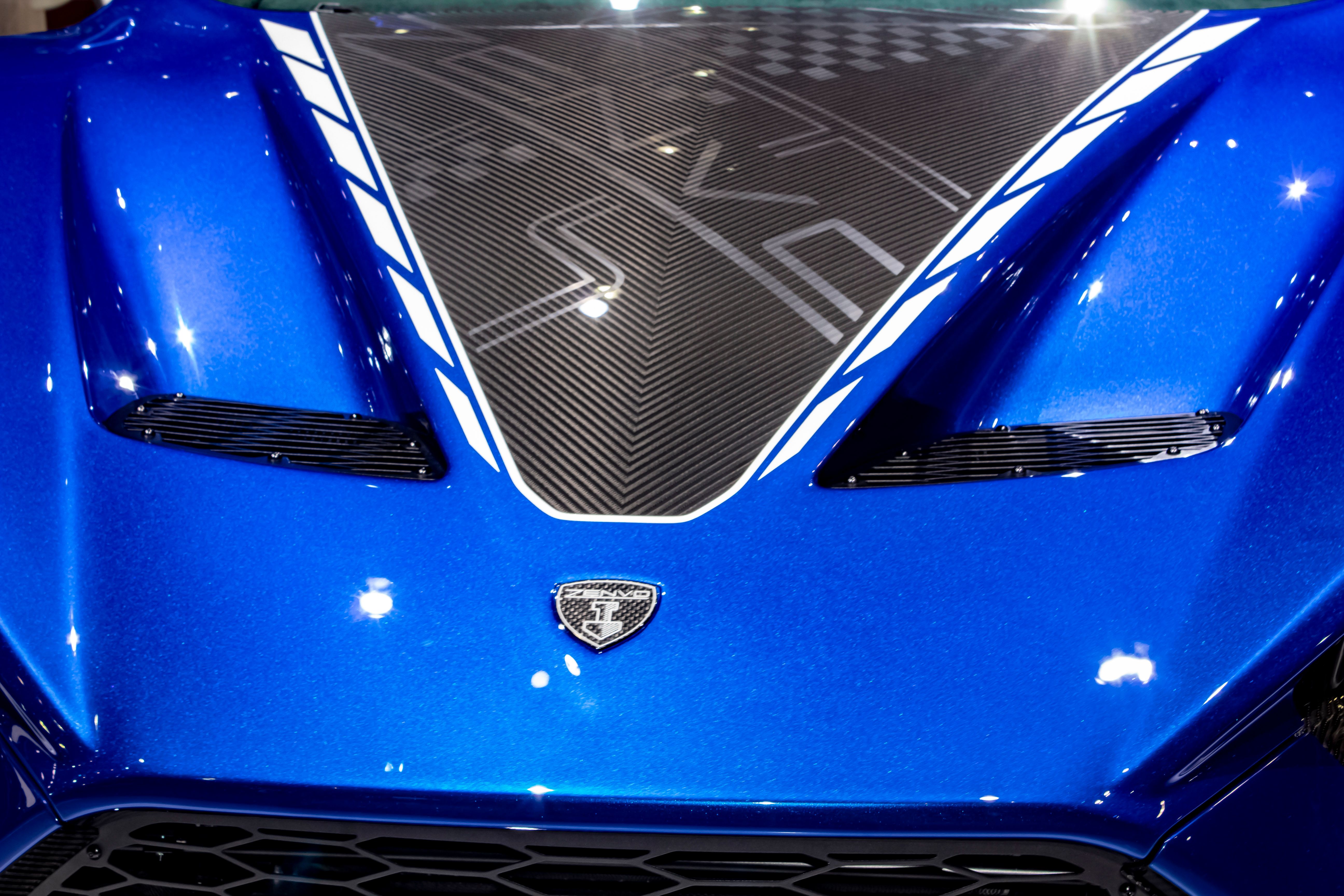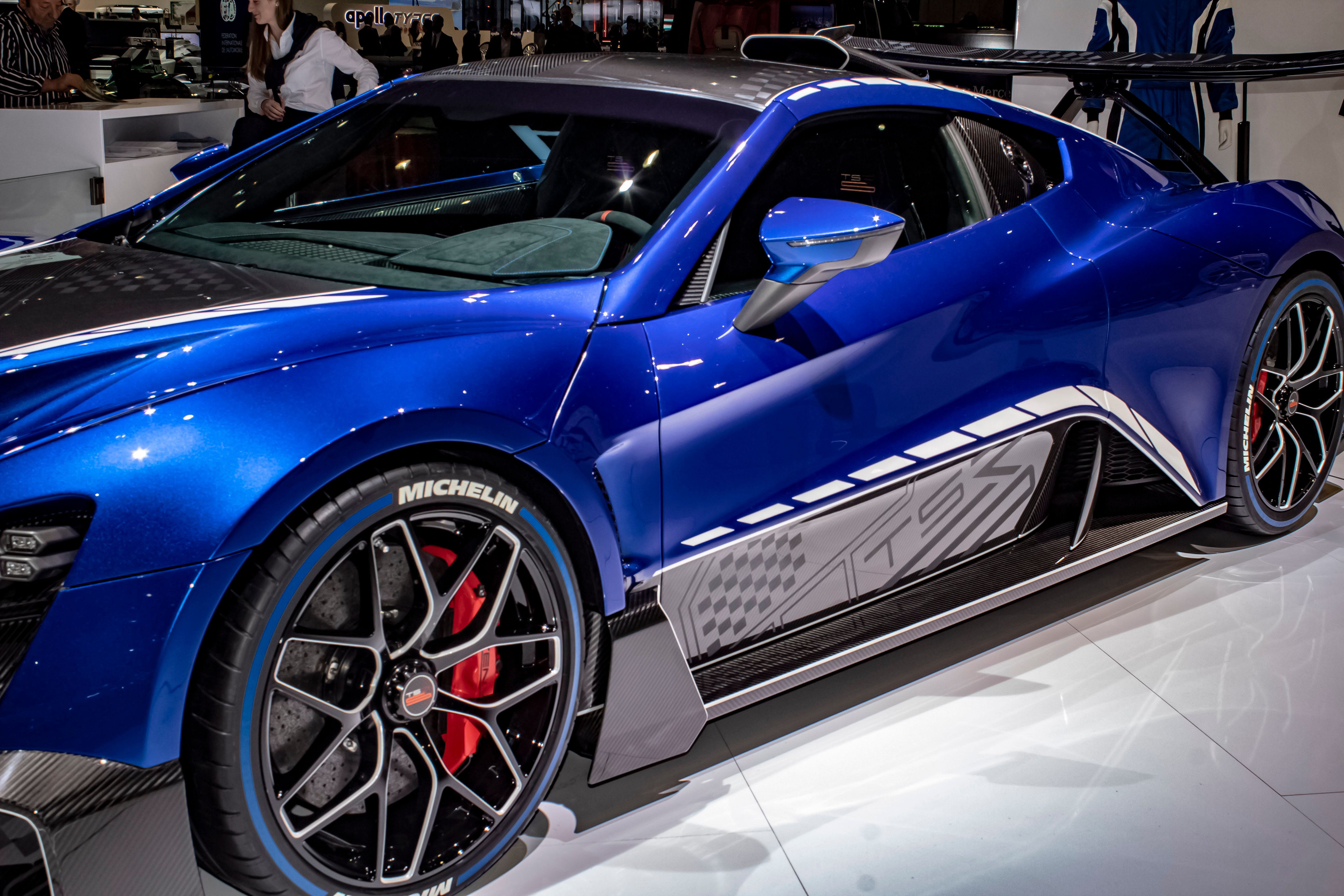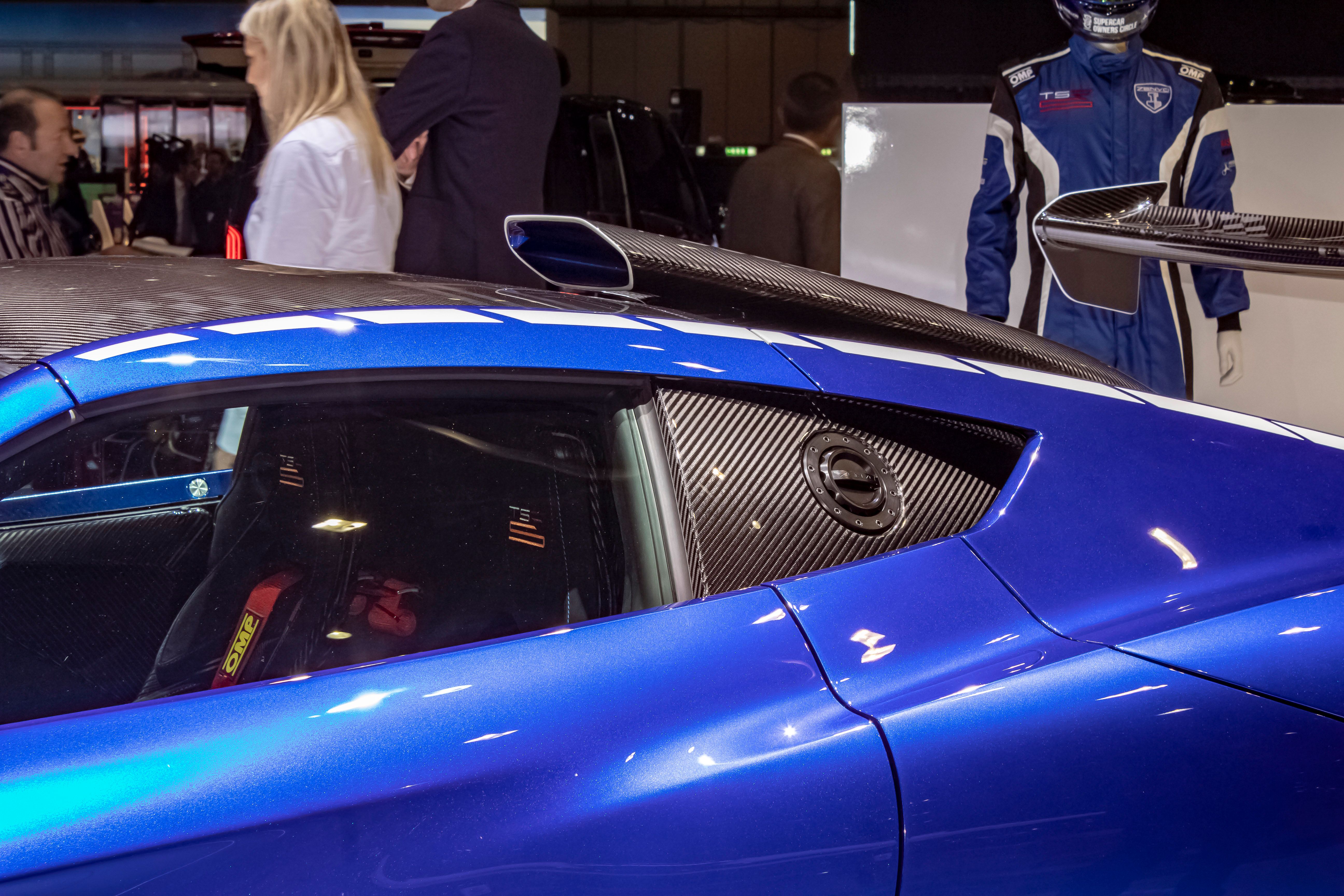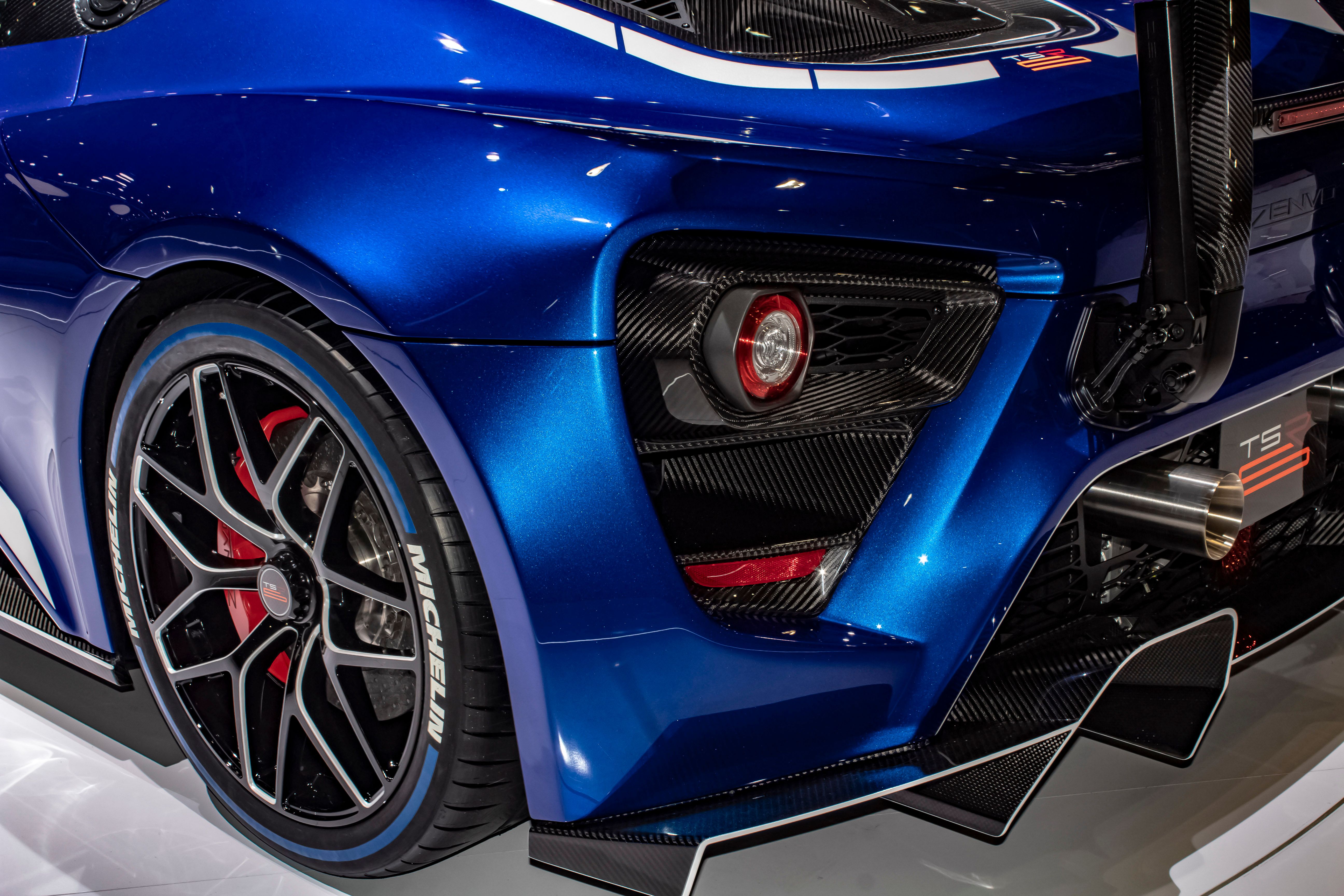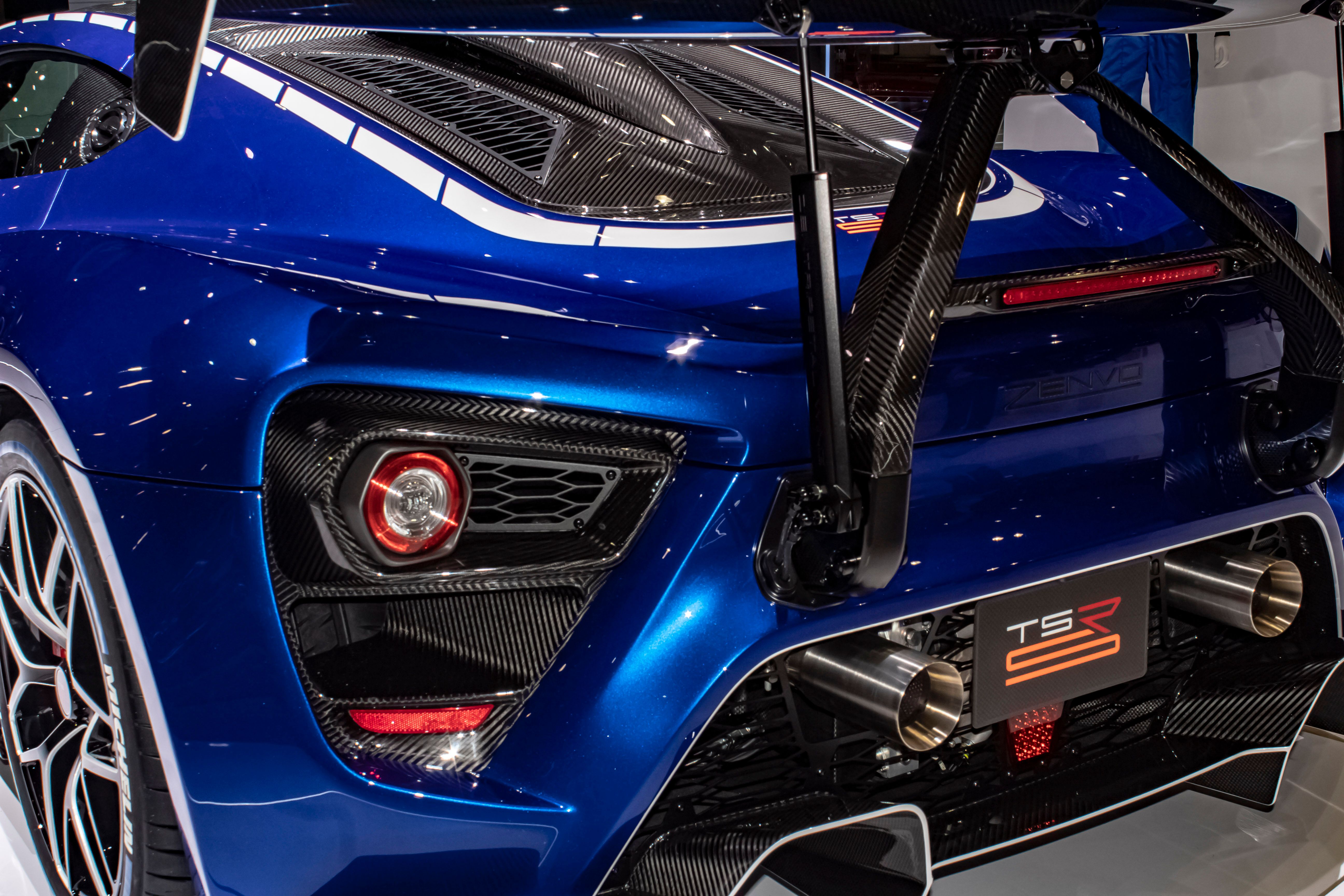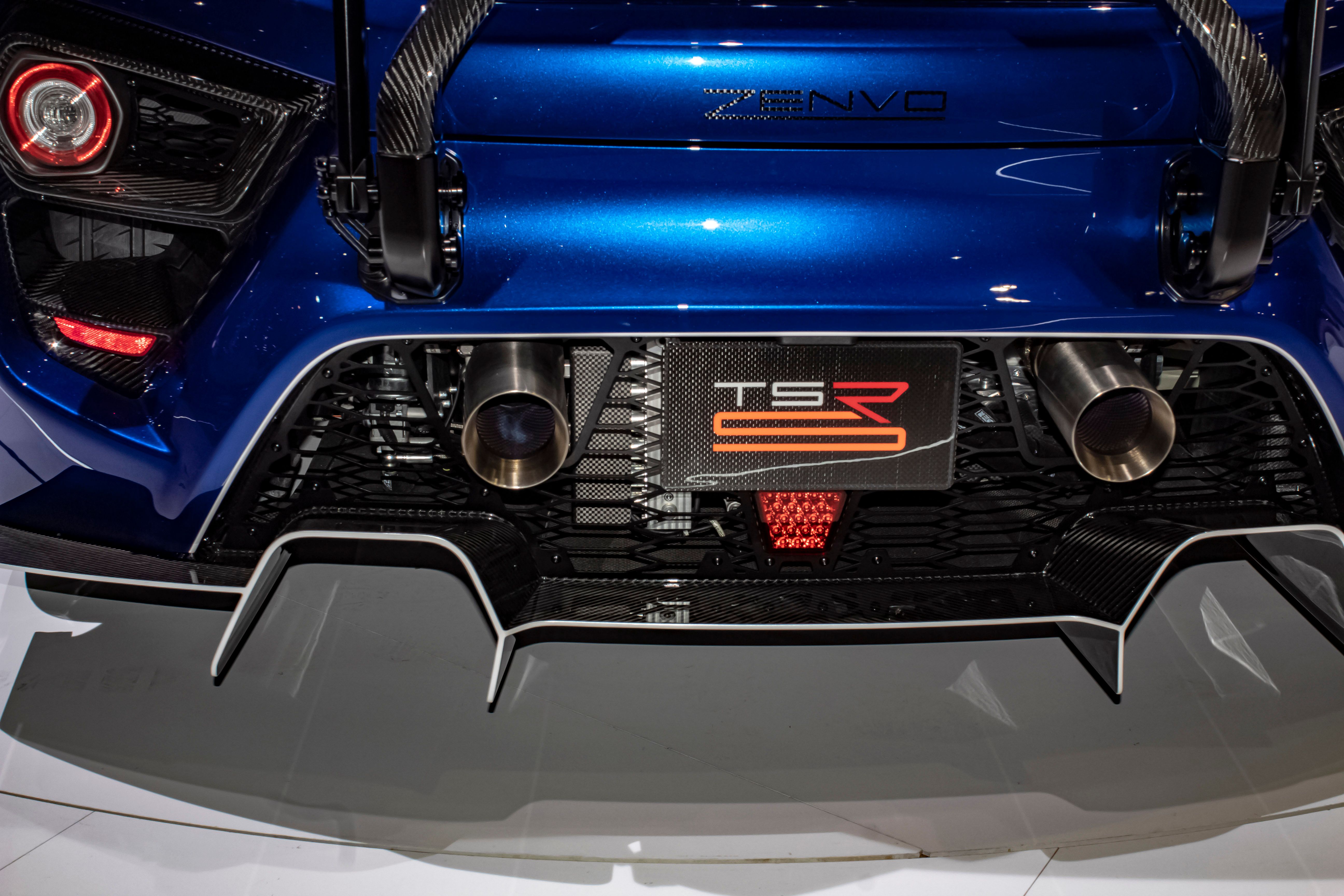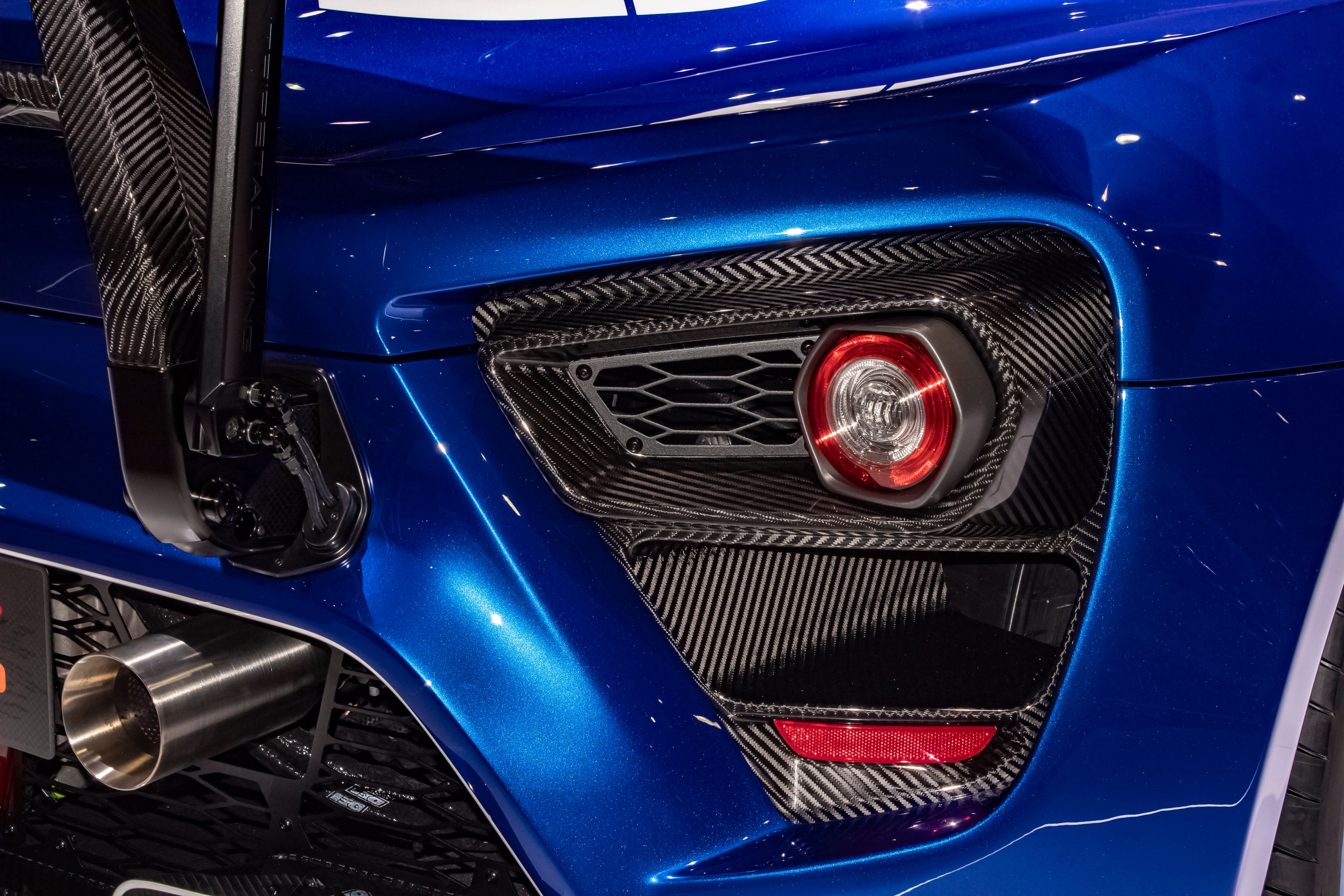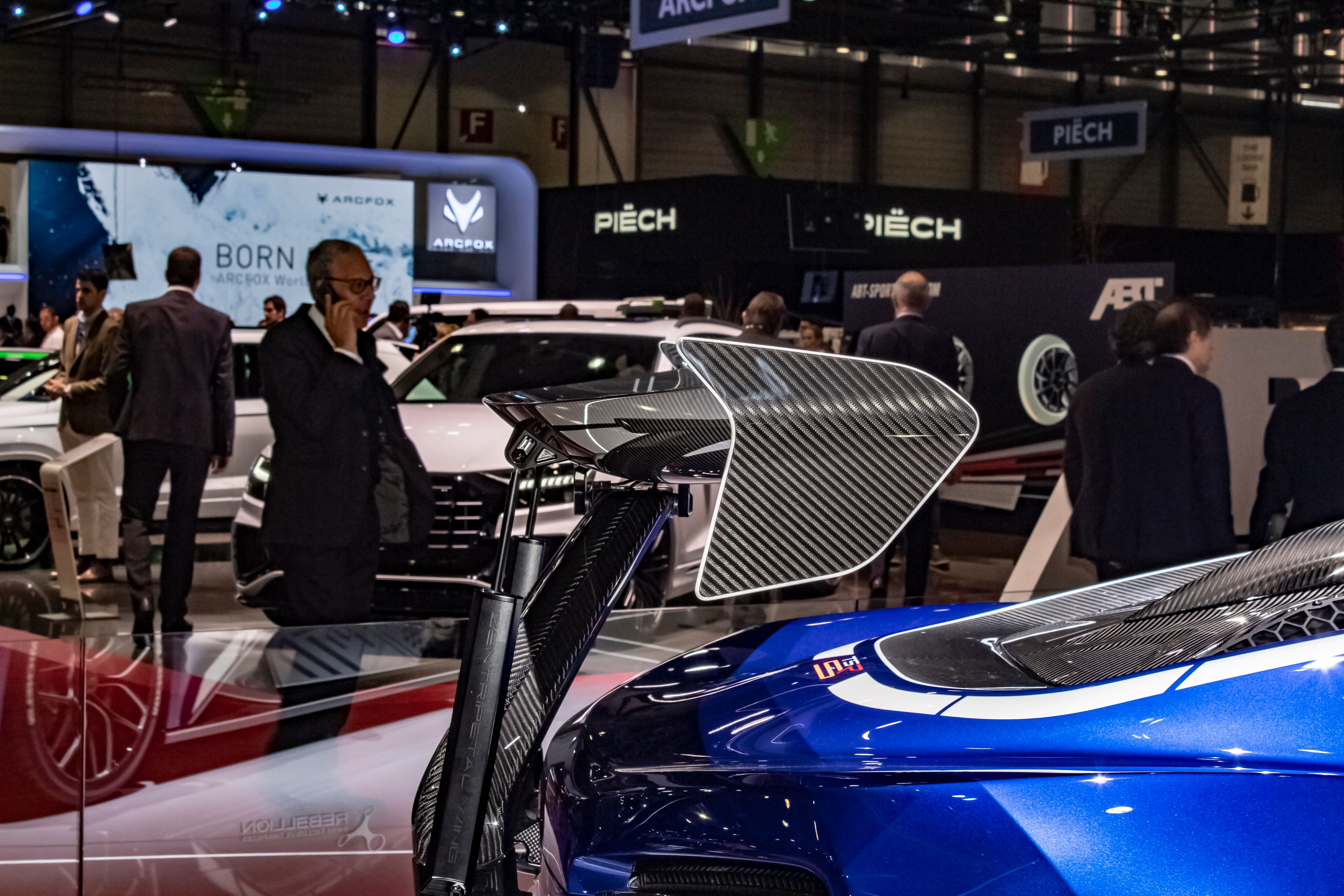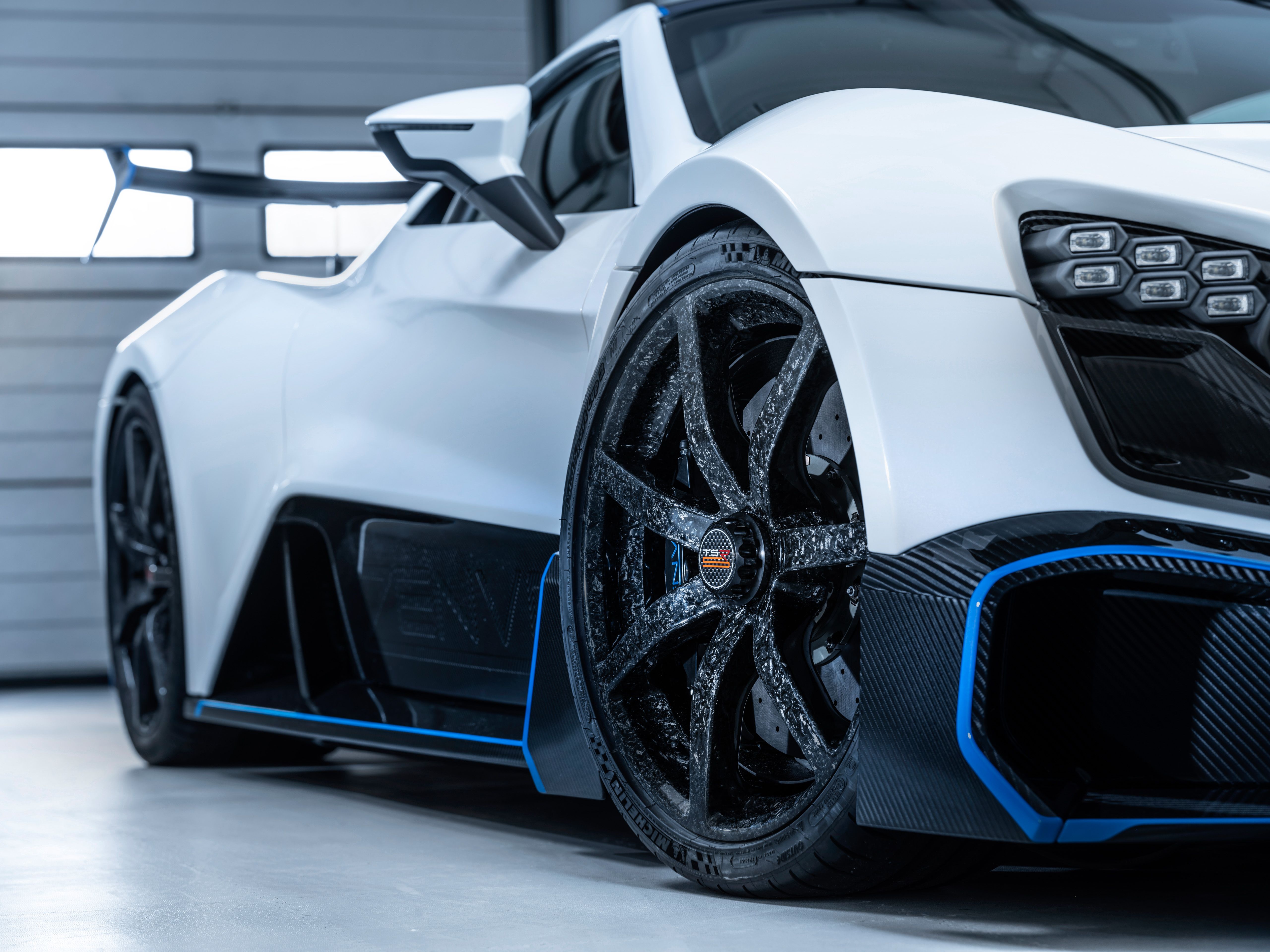Already nine years old as of 2018, the Zenvo ST1 has already made a name for itself as a potent supercar with extreme design and performance. Designed and built in Denmark, the ST1 remained in production until 2016, when it was replaced by the TS1, which gained certain changes in terms of aerodynamics and drivetrain. The TS1 was followed by the race-spec TSR in 2017. With the latter still new, Zenvo launched a new iteration of its only vehicle to date. It's called the TSR-S, and it's the company's most radical car for street use.
Positioned between the TS1 GT road car and the race-only TSR, the TSR-S shares the looks of the original ST1. However, it borrows the revised aerodynamics of the TSR, as well as a number of unique features that improve performance on both the road and the track. As usual, the Danish automaker will keep production very limited, with only five examples to be built a year. Yes, this thing is just as exclusive as a Koenigsegg, but does it have the power and speed to go against it? Let's find out in the review below.
Update: 3/12/2020 Zenvo has showcased its latest iteration of the TSR-S road-going hypercar and it comes with a handful of new improvements. Learn all about it below!
2018 - 2020 Zenvo TSR-S
- Make: Array
- Model: 2018 - 2020 Zenvo TSR-S
- Engine/Motor: V8
- Horsepower: 1177
- Torque: 900
- Transmission: 8AT
- [do not use] Vehicle Model: Array
What’s New for the 2020 Zenvo TSR-S Hypercar
You probably already know that production of the TSR-S is limited to just 5 examples per year, but what you didn’t know is that during this production, Zenvo was improving the car in various ways. For starters, the exterior of the 2020 model features a new weave pattern that can be customized by the owner. There’s also a new set of fragmented carbon wheels that, believe it or not, weigh some 15 kilos (about 33 pounds) less than the standard aluminum wheels that we saw back in 2018.
There aren’t any changes inside, but there is some news in the motivation department. The 5.9-liter V-8 is still good for 1,17 horsepower, but Zenvo has made some huge developmental leaps with that seven-speed gearbox. It now features an eighth forward gear and a new hybrid module that Zenvo says will provide some kind of power boost. It doesn’t say how much, but we suspect a minor bump should be the idea here. Reverse is handled by the electric motor, and there are two different gearbox modes. In “Road” mode the transmission is electronically assisted to provide smooth shifts while “Race” mode will give you that raw, hard shift that’s normally associated with track cars. That’s to upgrades to the transmission, traction control has also been enhanced.
Pricing for the Zenvo TSR-S is still pinned at €1.45 million, or about $1.6 million at current exchange rates. See our full Zenvo TSR-S gallery at the bottom of this page!
Zenvo TSR-S Exterior
The TSR-S is essentially a road-legal version of the TSR, so it shares many features with the race-only car, especially in the design department. However, Zenvo made extensive modifications to the aerodynamics, and this is more than obvious when you look at the car. The first thing that strikes the eye is the new nose and front bumper section. The grille is actually a bit larger than the TSR's, and now extends all the way down into the splitter. The latter has also been modified, as it no longer extends that much up front, but features more aggressive vents onto the sides. The new design improves front to rear downforce distribution by generating front downforce and directing air to the underbody. The updated front bumper and front wheel outlets stabilize the air around the wheels.
The signature Zenvo headlamps have also been updated. A new cluster adds small LED lamps in the upper corner, while the entire housing is now made from carbon fiber. They also feature Bi-LED technology and drag-reducing air ducts. The big vents in the front hood remain unchanged from the race car, but the center section is made from exposed carbon-fiber. Thin orange stripes add a dash of color to the carbon-sections on the hood and the bumper.
Further changes are visible onto the sides, with new winglets added to the carbon side skirts and larger, road-legal side mirrors. Of course, the TSR-S sports different wheels and road-going tires instead of the TSR's race-spec rim and rubber configuration.
The rear section is a mix of TSR features and new, extreme aerodynamic bits. Obviously the big news here is the crazy wing. Designed specifically for this model, it's mounted on unique carbon-fiber posts, while the wing itself sits as high as the roof. On top of that, it has a curved shape that's not exactly common on either road-legal or race-only cars. Zenvo even found a fancy name for this active multi-axis devices, which is called a "centripetal wing."
Developed through advanced aerodynamic analysis and implementation of advanced airflow management, it helps the car generate more than three times more downforce than the TS1 GT. The wing has two rotational axes enabling it to function both as an air brake and a cornering stabilizer. When the TSR-S corners, the wing rotates relative to the car’s longitudinal axis, generating an inward force together with the conventional downforce, boosting inner tire grip and cornering stability. When in horizontal position, it acts as a conventional rear wing and generates a downforce perpendicular to the car.
When the wing tilts away from the absolute horizontal position, the downforce stays perpendicular to the plane of the wing, which generates a centripetal force. This reduces the tendency of the rear end to break away and allows the wing to act as an additional rear anti-roll bar. It also provides extra grip to the inner wheel, reducing the chance of a loss of traction at the rear and also increases downforce on the inner wheel. This might just be the most advanced rear wing ever created!
Another big change around back is the LMP1-inspired air scoop on the entire hood. The diffuser is very similar to the TSR, but Zenvo says that the revised shape is optimized to extract air from the underbody and increase stability. Finally, the taillights were reduced to only one cluster unit per side in order to save weight.
Zenvo TSR-S Interior
Zenvo interiors are usually minimalistic and driver-focused, but the British firm took things up a notch for the TSR-S, which can be specced as a full-fledged race car. Although you can order many options, the standard package doesn't include a sound system or speakers, a navigation system, air conditioning, and airbags. Yup, despite being legal for public roads, this car begs to be taken to the Nurburgring for some amazingly fast laps!
The steering wheel is based on the TSR and features race-inspired switches, while the bespoke seats have carbon-fiber shells and are wrapped in Alcantara for proper grip. Race-ready six-point harnesses can be ordered optionally. Unlike the TS1, every surface has been stripped off to expose the carbon-fiber the cockpit is made from. There is some Alcantara here and there, but only only where it's necessary to eliminate reflections in the windscreen. The instrument cluster also sports new graphics and a horizontal rev-counter inspired by retro race cars from the 1980s.
Another big change from the TS1 GT is that there are no precious metals used for the CNC-machined trim parts. Instead, the TSR-S features black anodized aluminum trim, which underlining the racing ambiance of the cabin. However, if you want a slightly fancier cabin, you can have it finished in other colors too.
Zenvo TSR-S Drivetrain
Not surprisingly, the TSR-S draws its juice from the twin-supercharged, 5.9-liter V-8 used in the TS1 and TSR. But unlike its siblings, it features a manually adjustable performance setting with a variable power output. In its lowest setting, called Minimum (not so inspiring, I know), the TSR-S hits the asphalt with 700 horsepower. Needless to say, it's far from impressive when compared to the TS1's 1,163-horsepower output, but power jumps to a whopping 1,177 horses when the drivetrain switches to the Maximum setup. This is the most extreme version of the TSR-S and enables the coupe to hit 62 mph in 2.8 seconds, to go with a top speed limited to 202 mph.
There's also a third mode called IQ. Zenvo didn't say how much power this configuration uses, but mentioned that IQ is an autonomous setting that "cleverly provides race-car for the road driving characteristics." Specifically, the advanced traction control system continuously assesses the grip of the tires on the road and limits the power accordingly. Where traction allows, the IQ setting will ensure maximum power is delivered to the rear wheels whenever possible. I guess IQ is the perfect setting if you want the car to decide when it's appropriate to floor it with all 1,177 horsepower at your disposal.
But the engine isn't the only drivetrain component that comes with different stages. The gearbox also has a dual setup that can switch between a standard road configuration and a brutal power-shift setting for the track. The gearbox comprises a seven-speed paddle-shift gearbox with helical-cut dog gears and the switch between the two setups is a development that is unique to Zenvo. There aren't many details available, but the Danish claim that in Road setting, the gear changing is electronic, with sensors adjusting the shifting to remove the harshness often experienced by a dog box for a more relaxing drive. In Race mode, the direct mechanical power-shift become more brutal to deliver one of the fastest-shifting powertrains in existence.
Finally, the drivetrain benefits from an improved active rear differential and an advanced traction control system to make things smooth and fast.
Zenvo TSR-S Prices
Pricing is obviously a mystery at this point, but this supercar is definitely of the "if you have to ask then you can't afford it" variety. With the TS1 GT priced well above the $1 million mark, this new supercar could fetch close to $2 million before options. Actually, it could be significantly more than that with only five units built per year. And given the very low output, there's a big change you'll never see one on the road.
Zenvo TSR-S Competition
Koenigsegg Agera RS
Supercars with more than 1,000 horsepower were pretty rare ten years ago, but there are quite a few models you can purchase nowadays. Given you have the money and you qualify as a potential customer (with Ferrari, you have to own other models to be able to buy one), of course. The first model that comes to mind is the Koenigsegg Agera RS, which is the first on my list because it's also built in Scandinavia. Assembled a bit farther up north in Sweden, the Agera RS is one of the most potent supercars available. However, it won't be around for long because the Swedish automaker is building the final units as we speak. Powered by a twin-turbo, 5.0-liter V-8 engine, the Agera RS cranks out 1341 horsepower and holds a few world record for acceleration, braking, and top speed. The Swedish supercar is the world's fastest since November 6, 2017, when it hit an average top speed of 277.9 mph, around ten mph more than the previous record holder, the Bugatti Veyron. The only issue with the Agera RS is that you can't really buy it anymore with the remaining units already sold out.
Read our full review of the 2015 Koenigsegg Agera RS.
Bugatti Chiron
No 1,000+ horsepower supercar comparison is complete without the Bugatti Chiron, the successor to the already iconic Veyron. Introduced in 2016 with a significantly redesigned body and cabin, the Chiron looks like a natural evolution of the Veyron. It's more aggressive and aerodynamic on the outside, boasts more luxury inside the cabin, while the quad-turbocharged, 8.0-liter W-16 engine cranks out more power. The massive mill is now rated at 1,479 horsepower and 1,180 pound-feet of torque, which travels to all four wheels through a seven-speed dual-clutch transmission. The Chiron's performance figures are impressive to say the least. The 0 to 60 mph sprint is achieved in 2.4 seconds, while sprinting to 186 mph takes 13.6 seconds. Top speed is limited to 261 mph for safety reasons, but Bugatti believes that the Chiron will hit around 288 mph. None of the figures above have been tested or verified by an independent authority. Limited to 500 units, the Chiron is priced from nearly $3 million.
Read our full story on the 2018 Bugatti Chiron.
Conclusion
The supercar niche isn't as small as it used to be, but it's still a very small market compared to mainstream classes. But even so, it's split in even smaller niches. And Zenvo is part of the tiny segment that includes very small automakers that build cars in very limited numbers. While Koenigsegg managed to get out of it with slightly bigger production runs and more than one model, Zenvo still offers one nameplate at a time. The downside here is that the Danish firm isn't as famous as Bugatti, for instance, but there's more exclusivity to be had if you don't care much about the badge. Of course, if this new supercar sets a few world records, Zenvo might climb a few steps of the hypercar market ladder. It has the extreme design, the impressive performance, and the state-of-the-art tech, all it needs is some real action on race tracks like the Nurburgring.
References
Read our full review on the 2017 Zenvo TS1 GT.
Read more Zenvo news.
Read more Geneva Motor Show news.
Update History
Updated 03/19/2019: We’ve updated this review with fresh images of the 2019 Zenvo TSR-S that were taken during the 2019 Geneva Motor Show. Check them out in the gallery at the bottom of this page!


